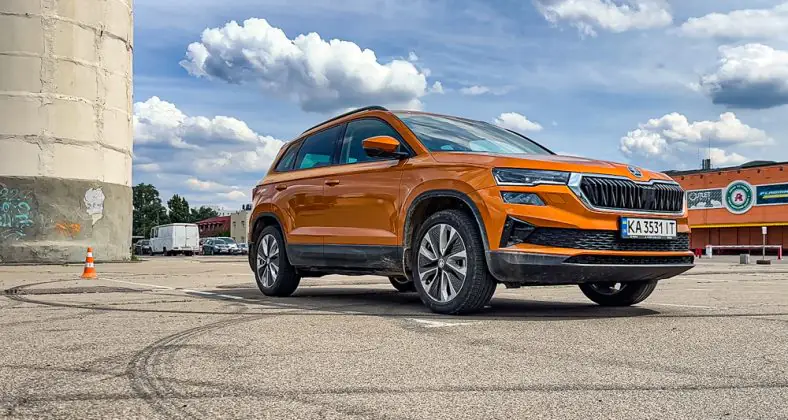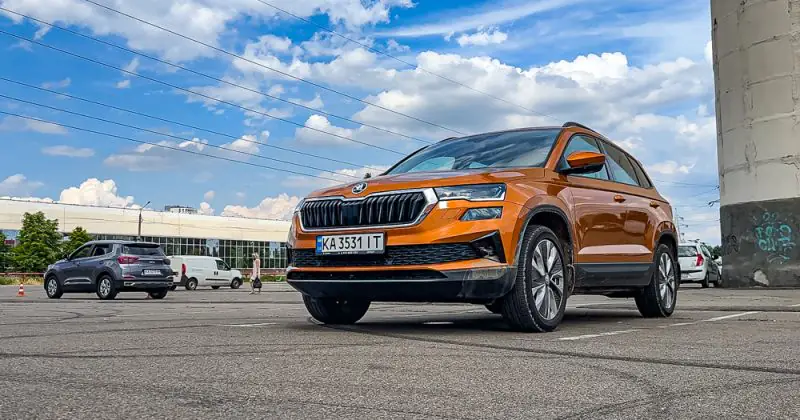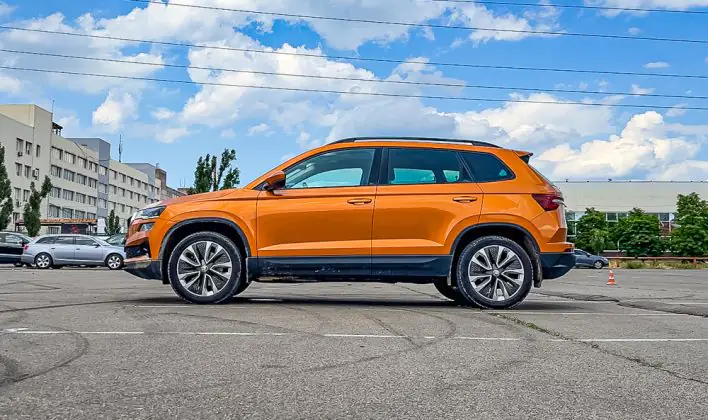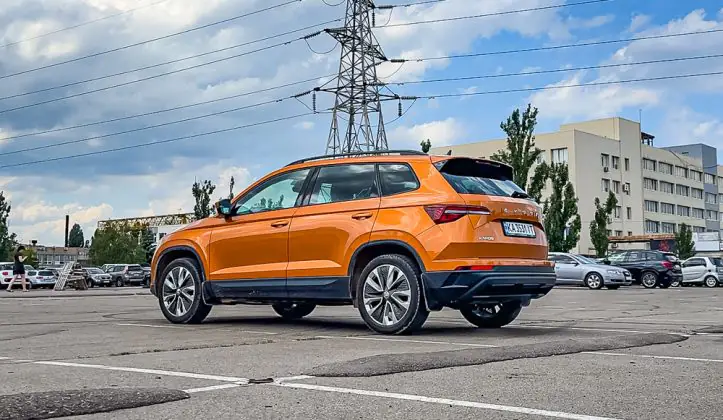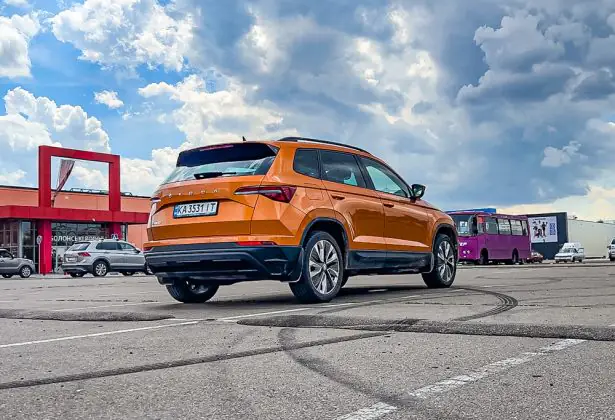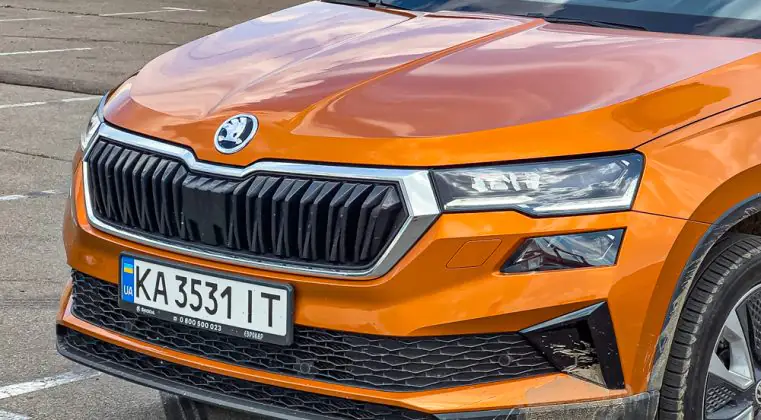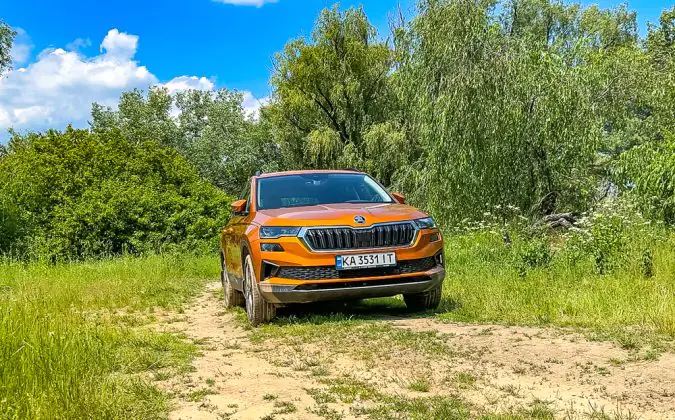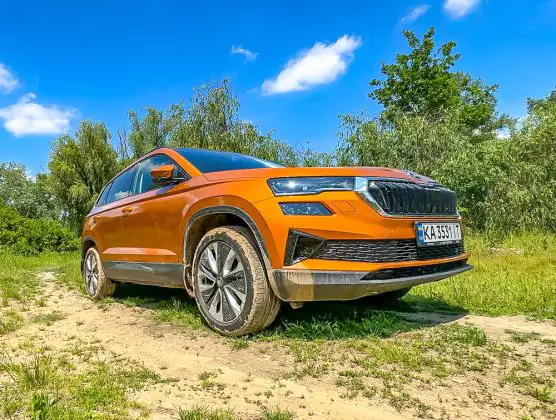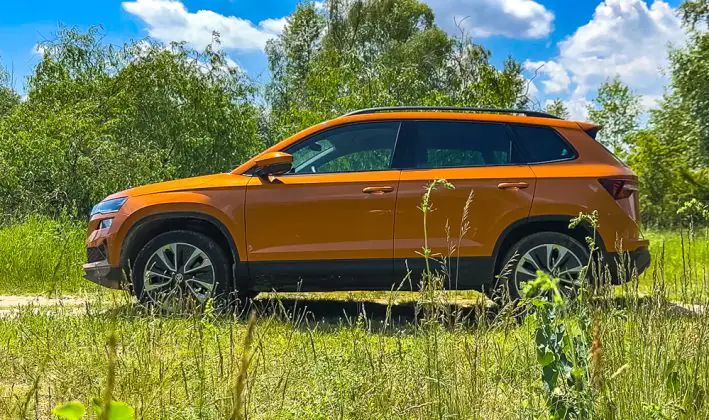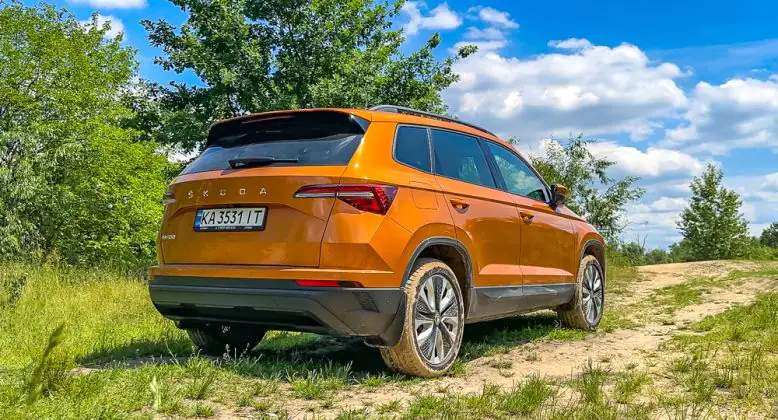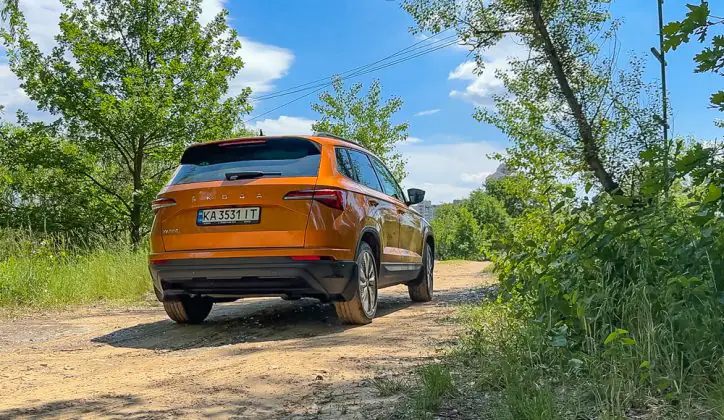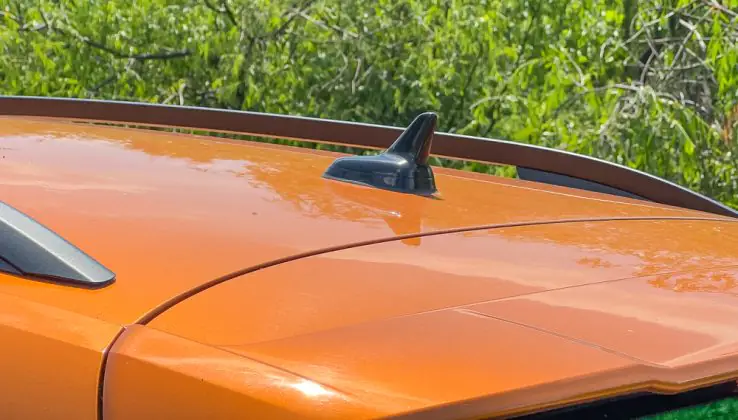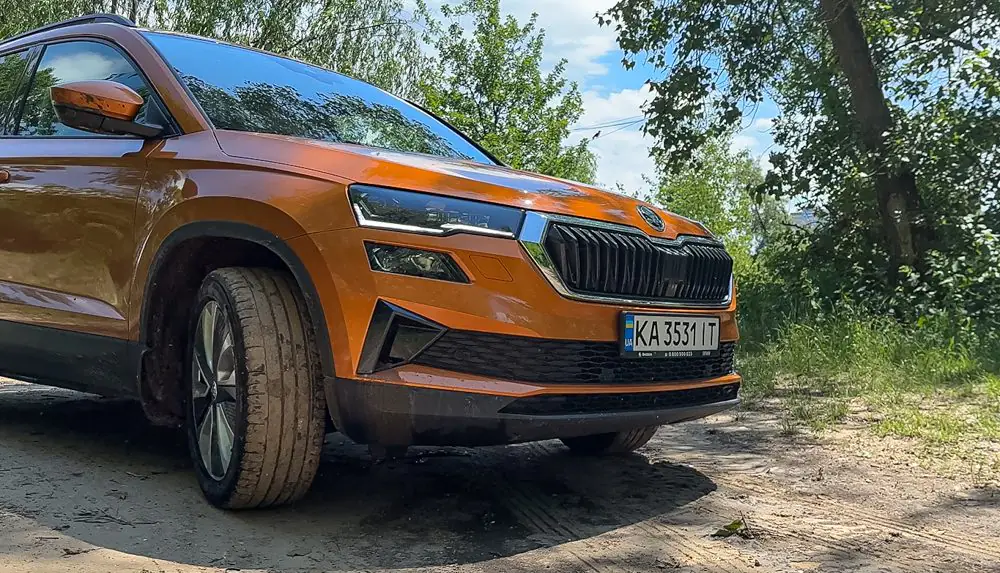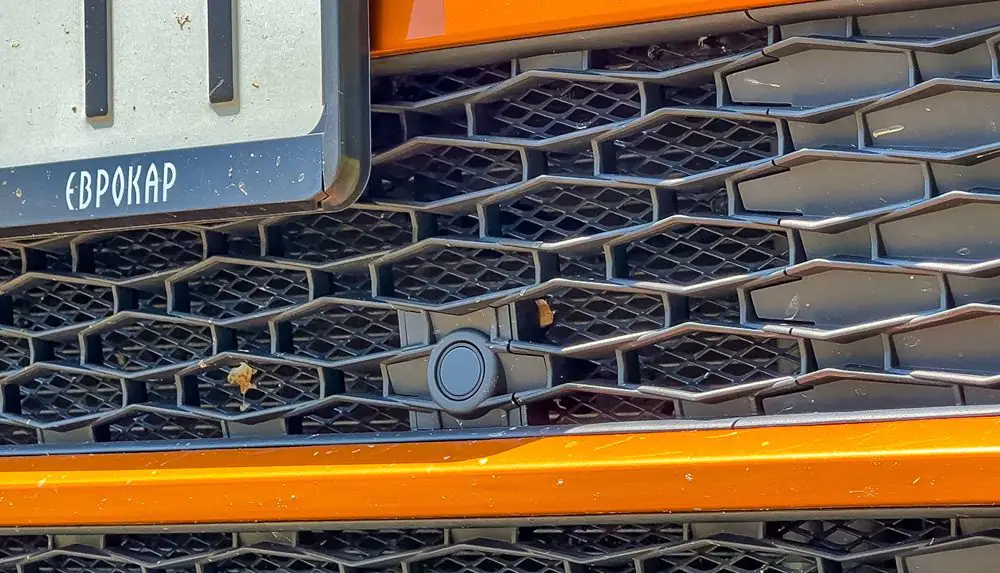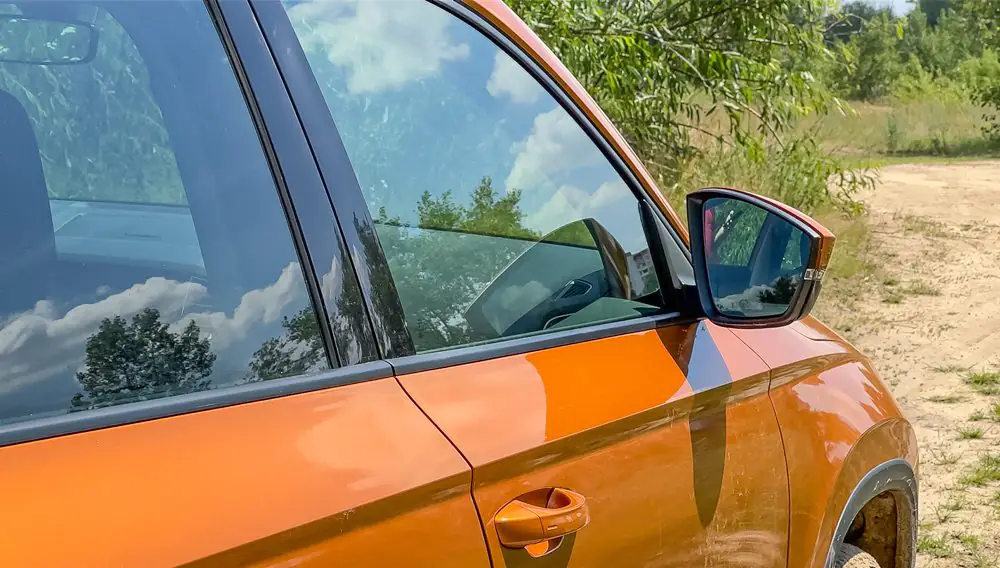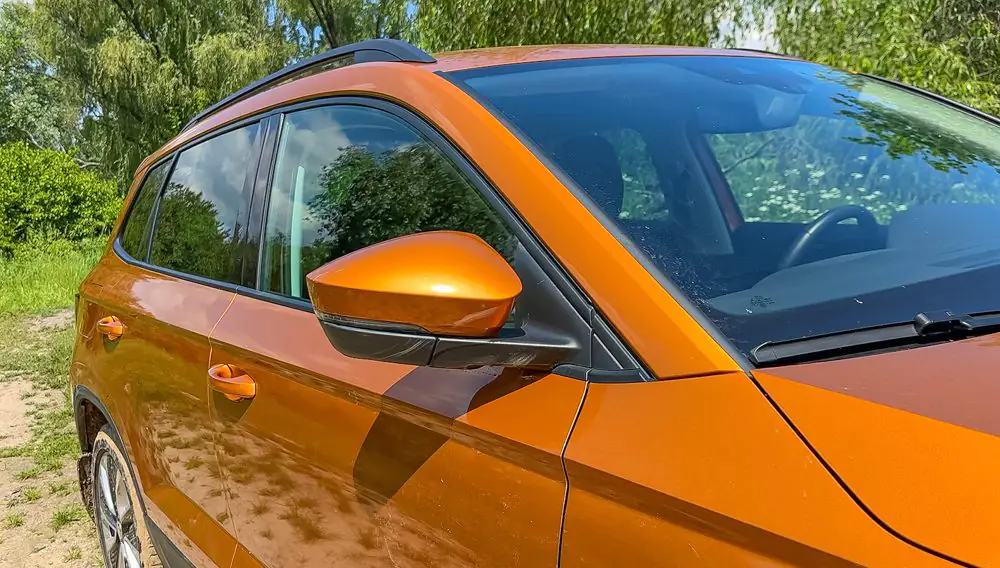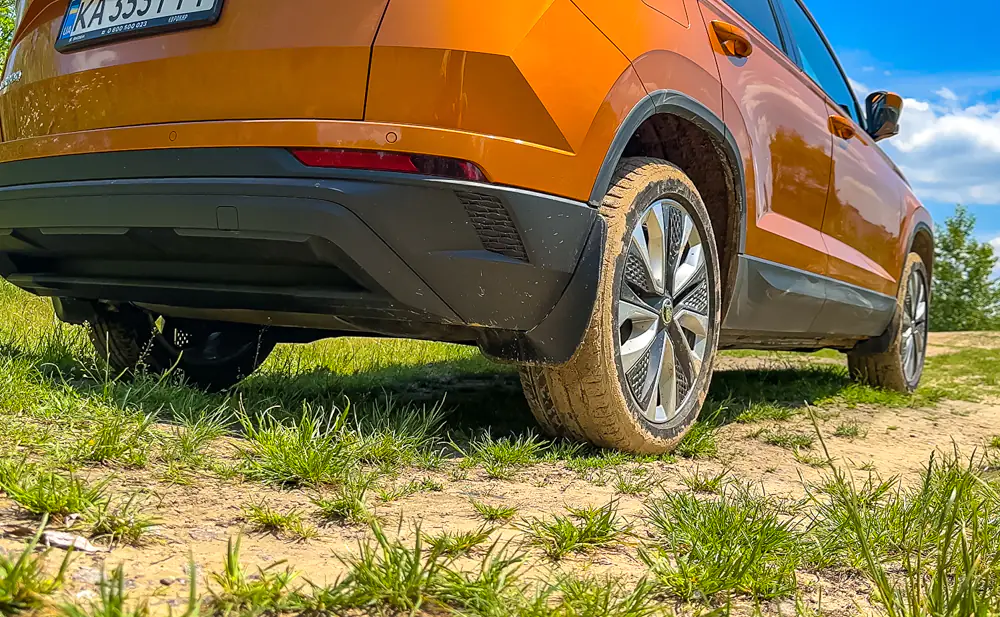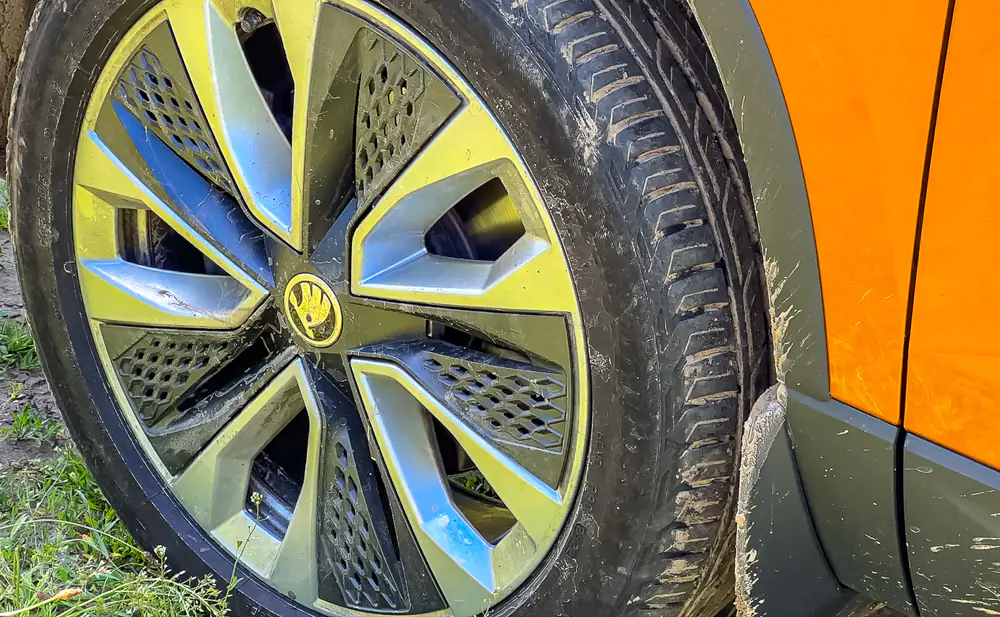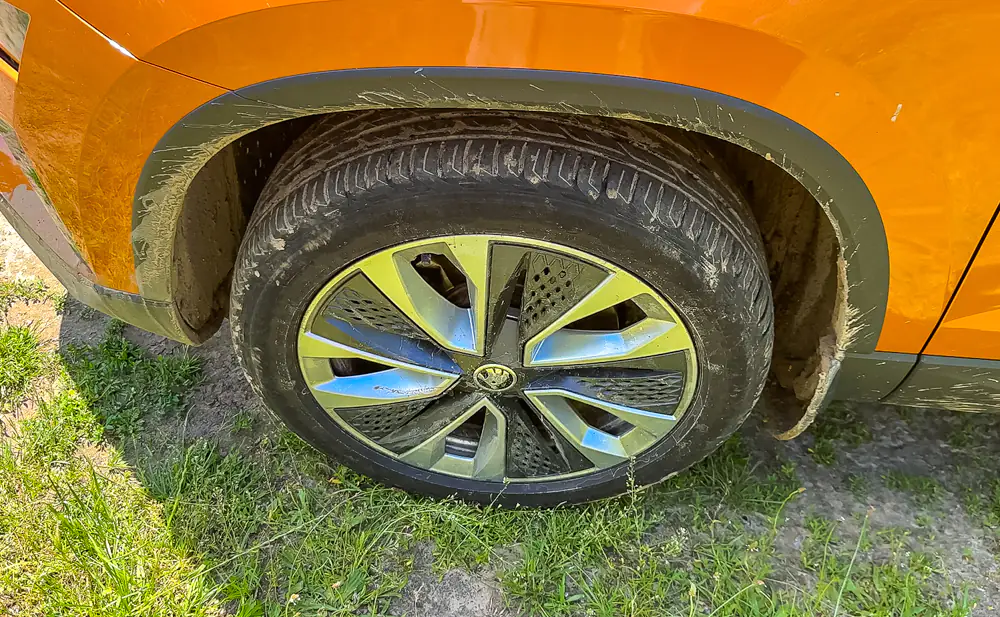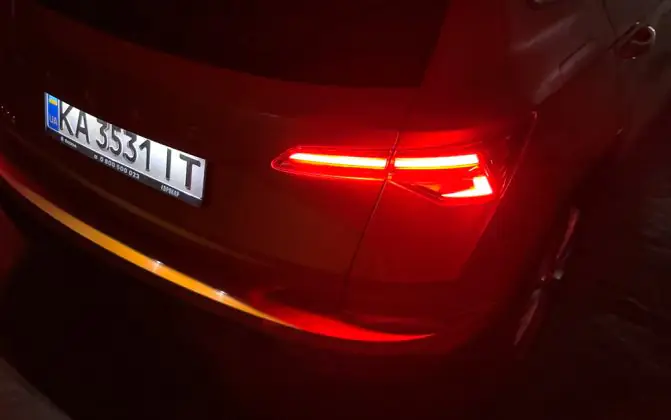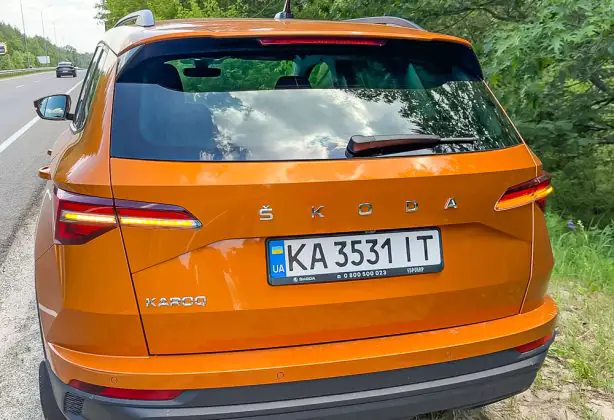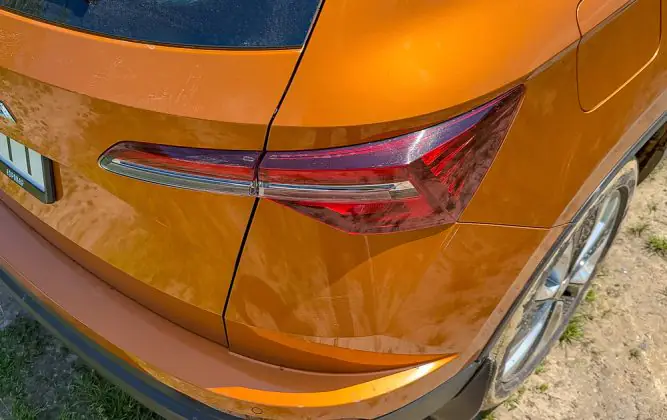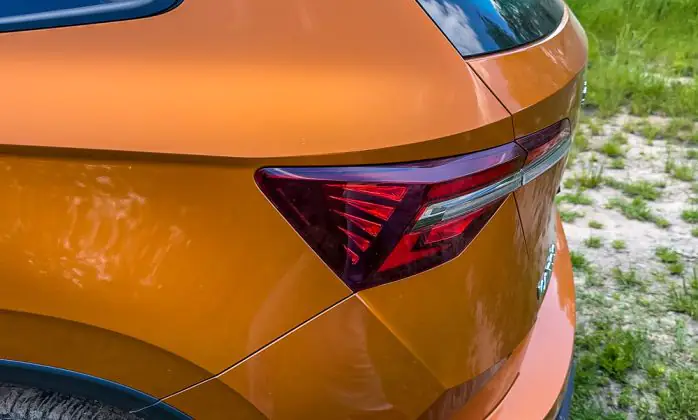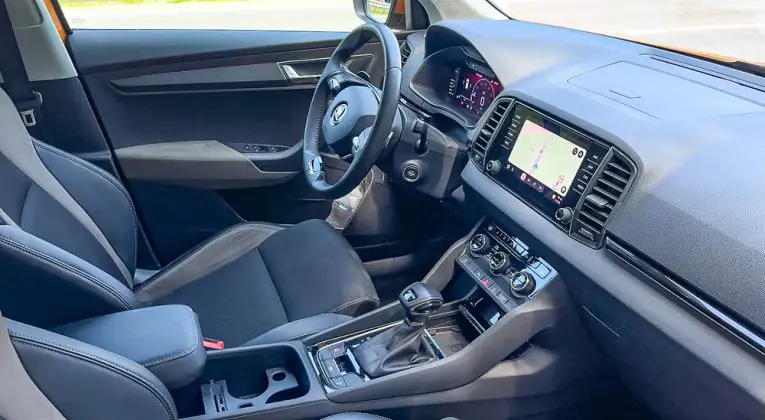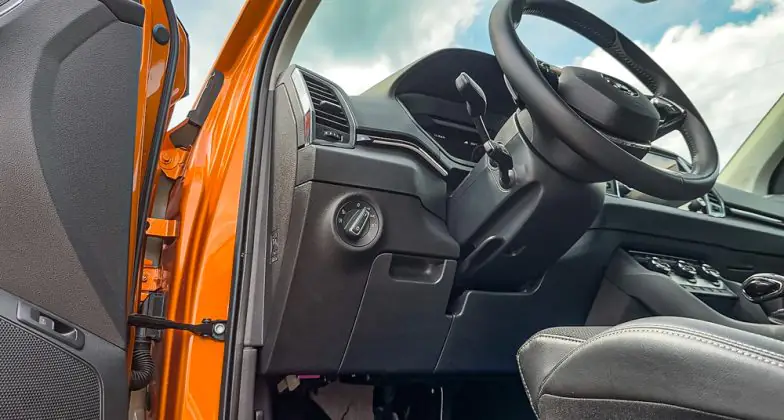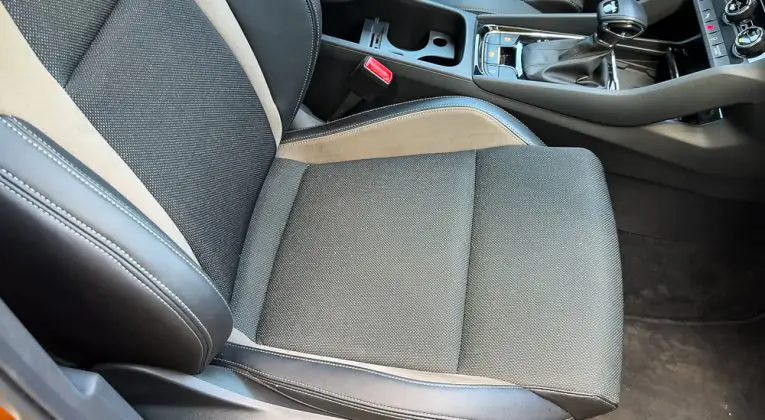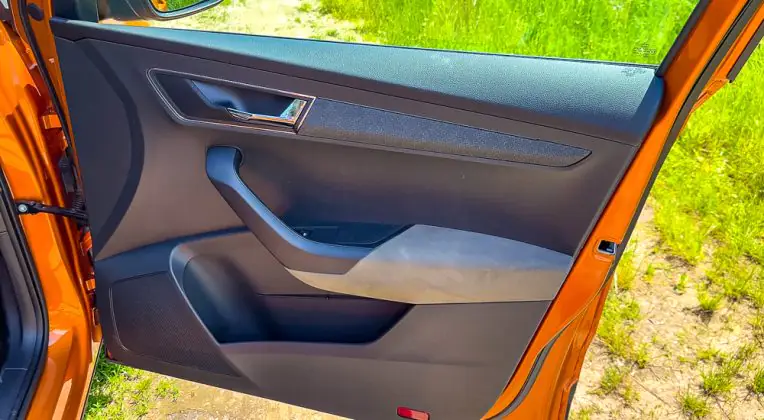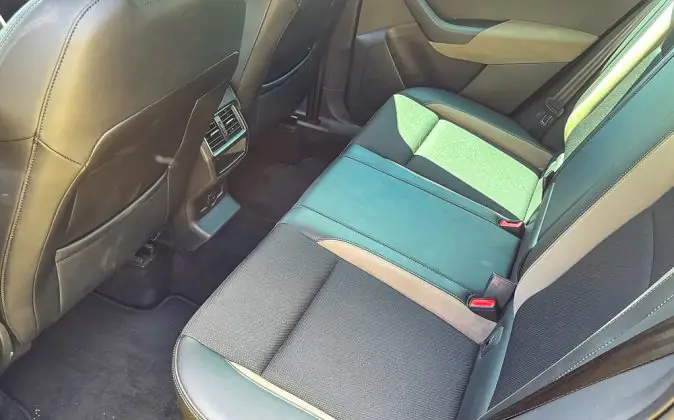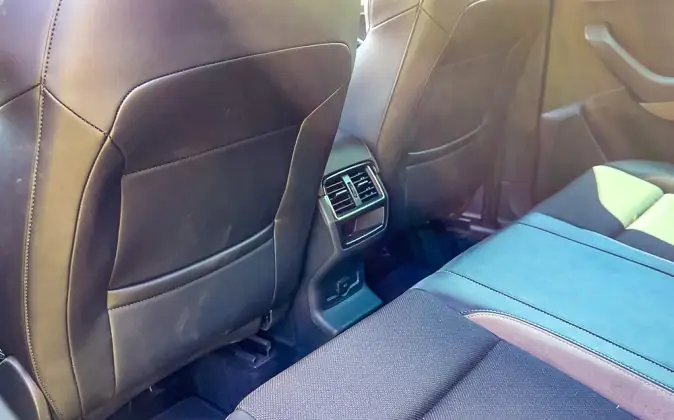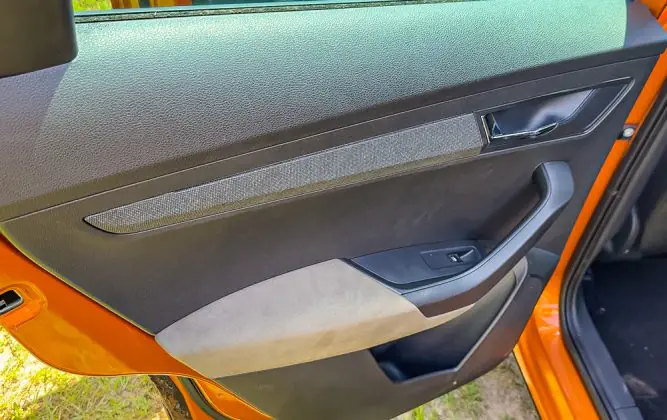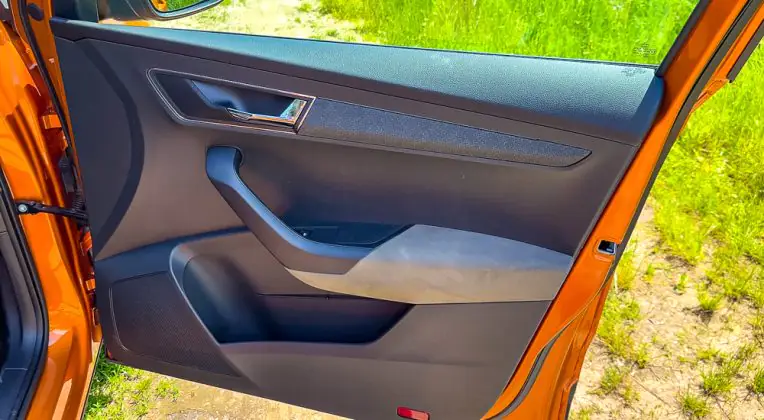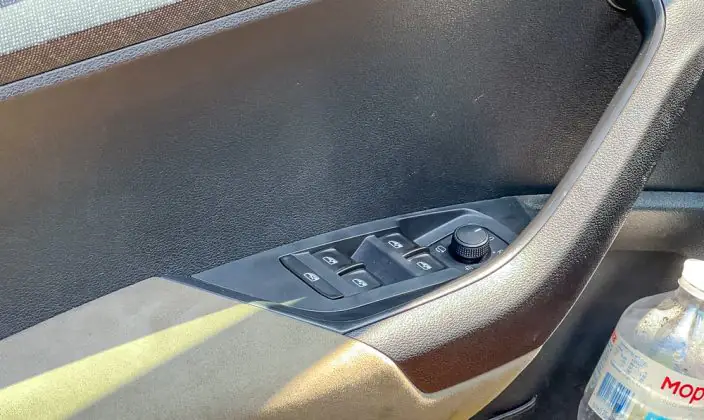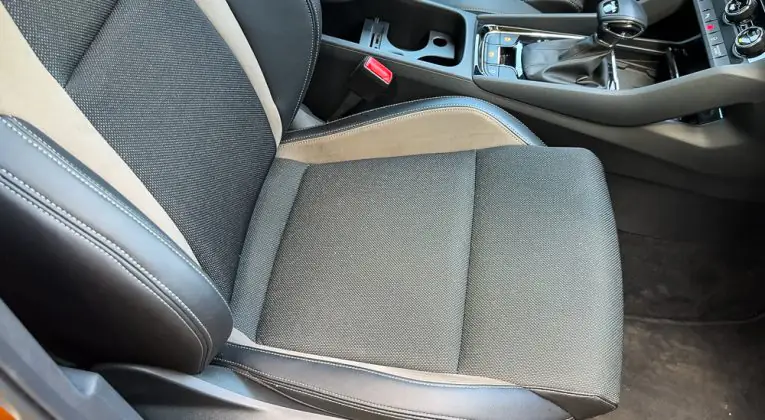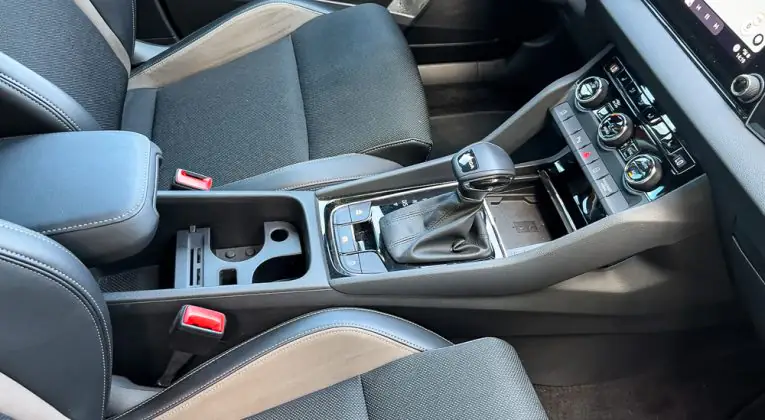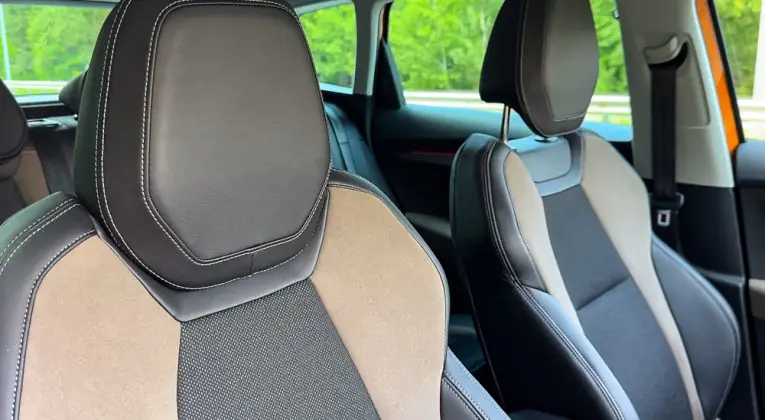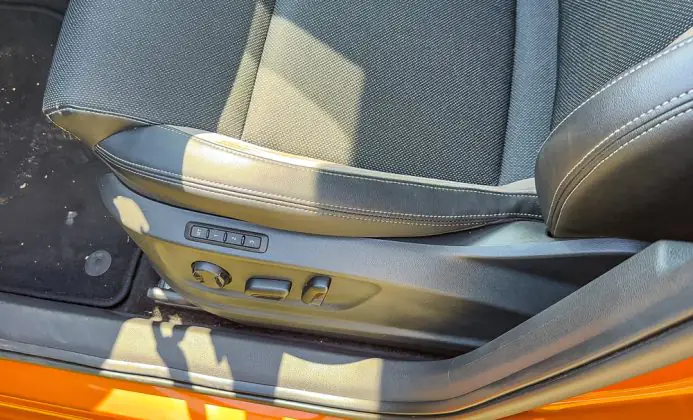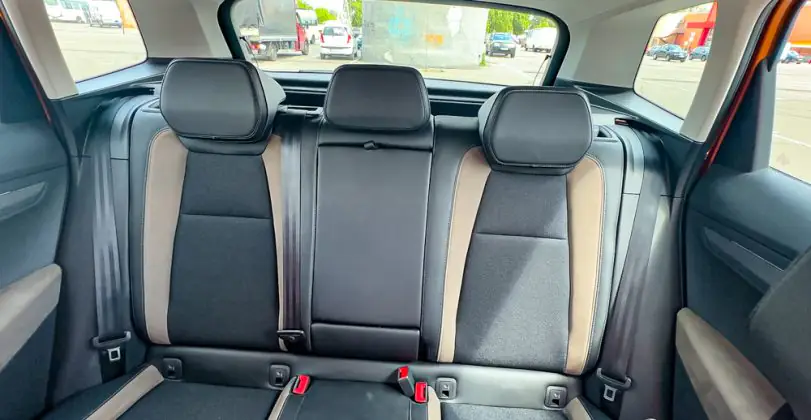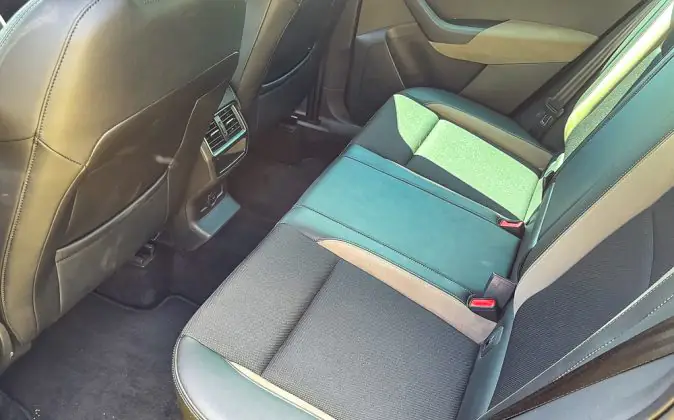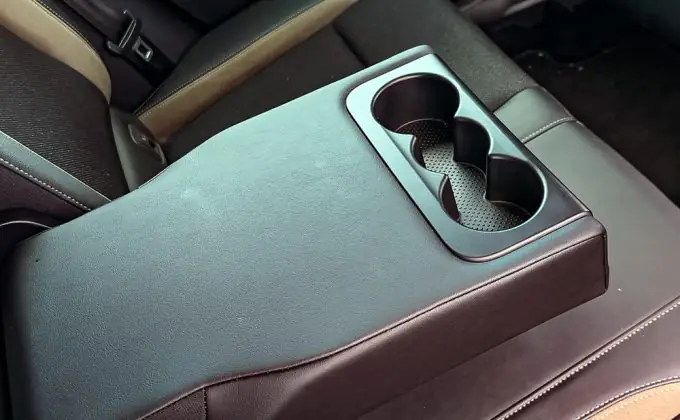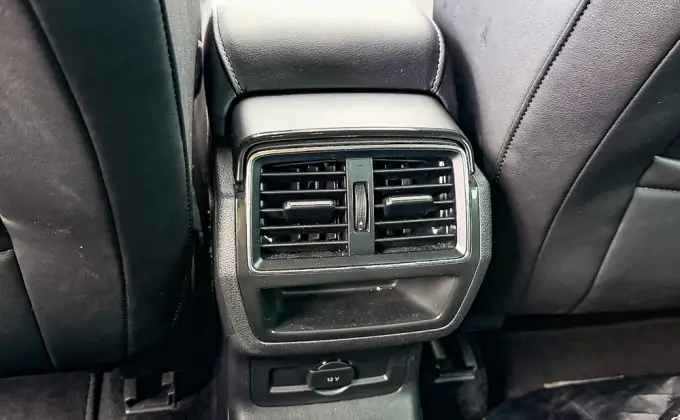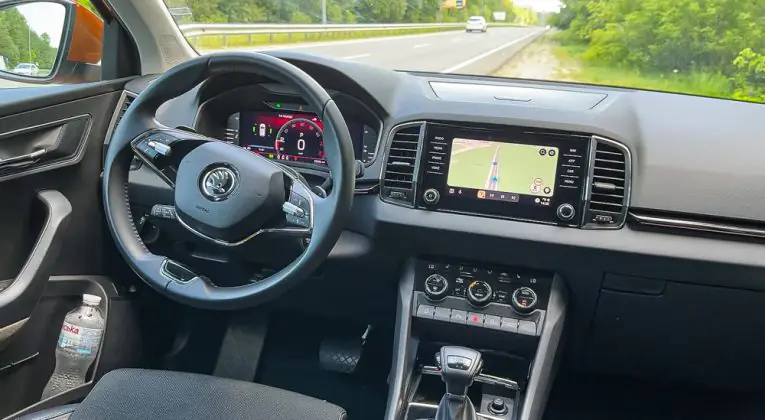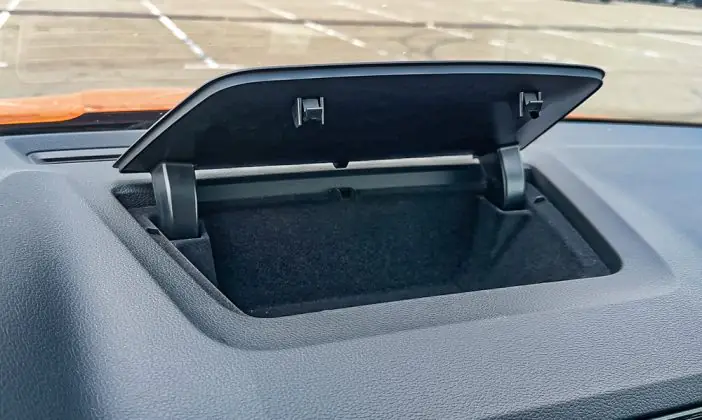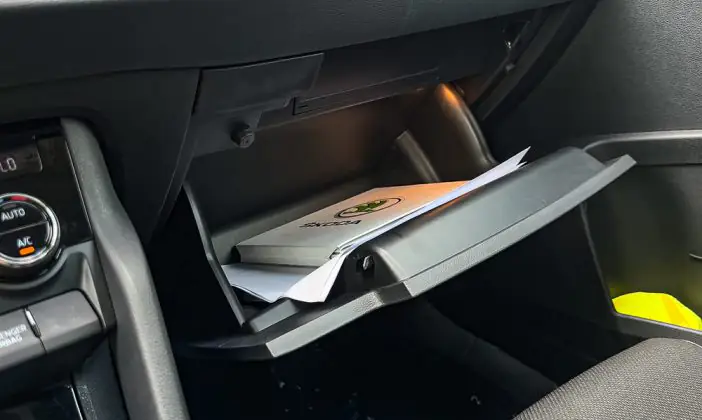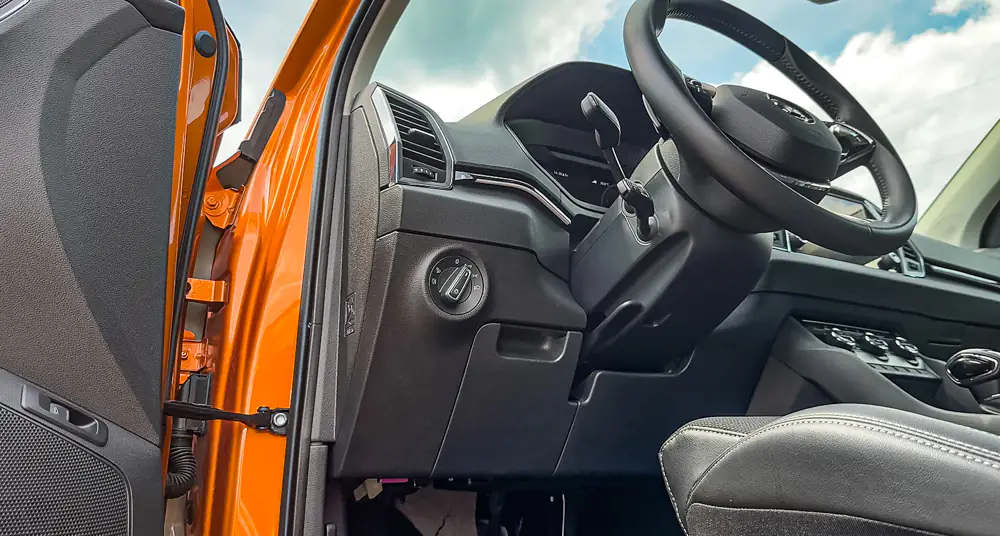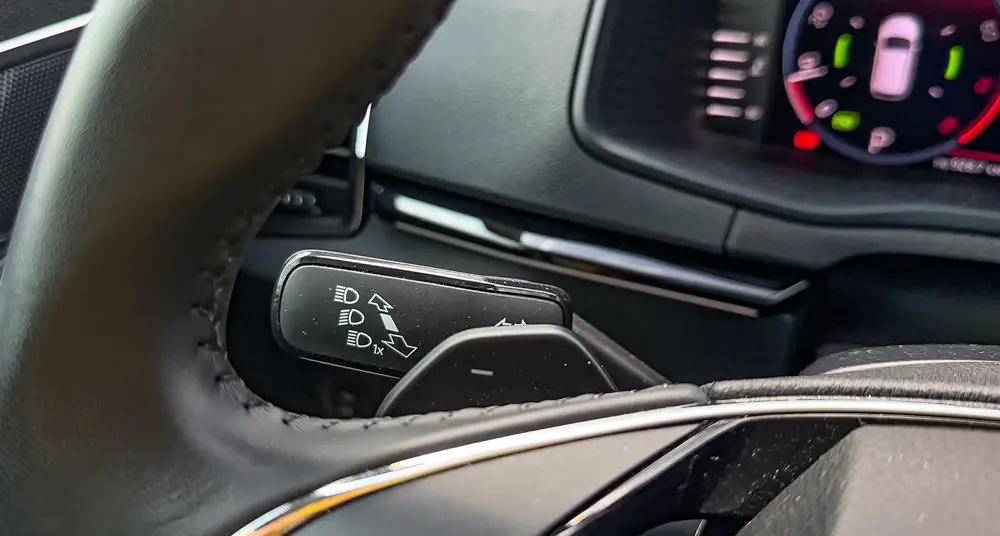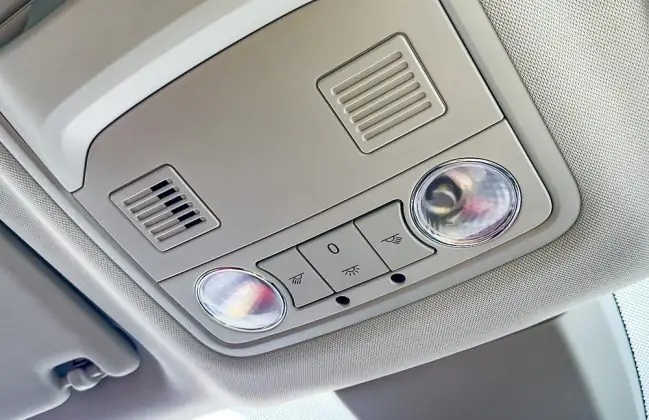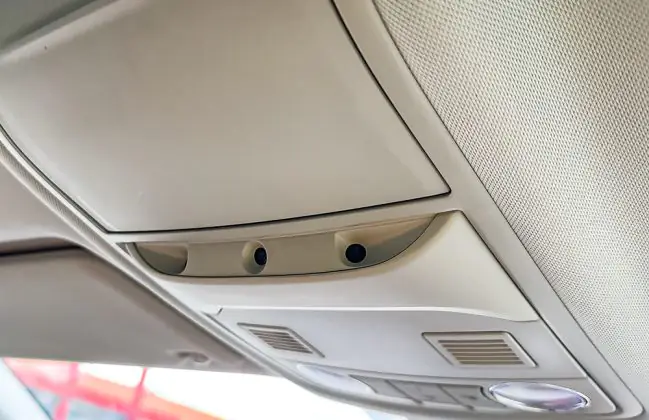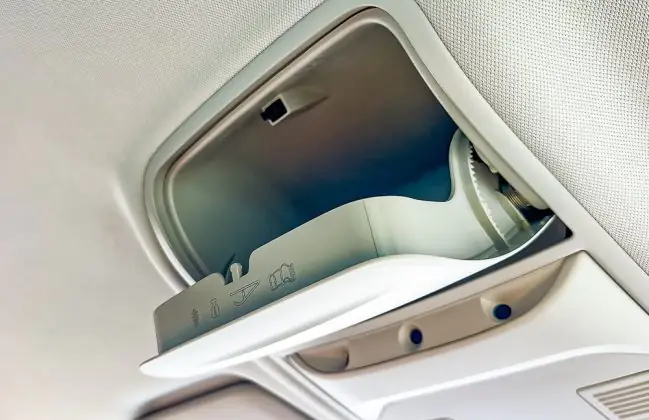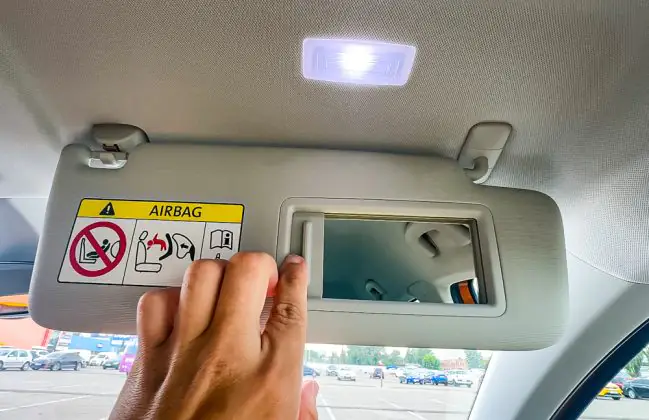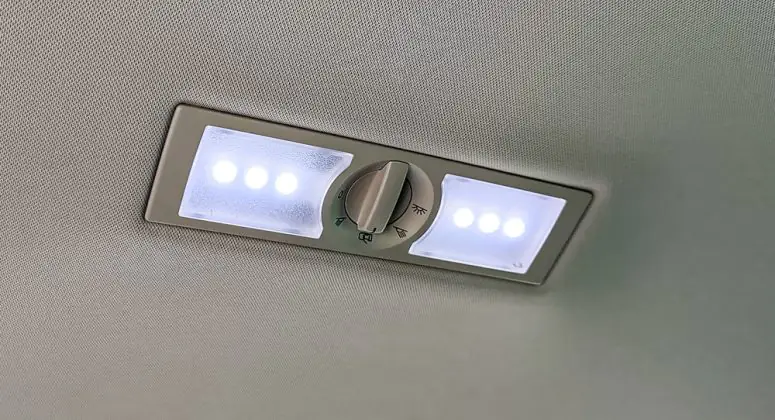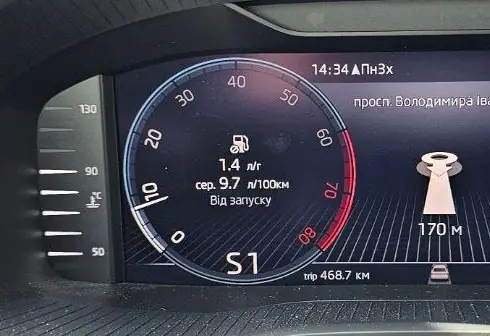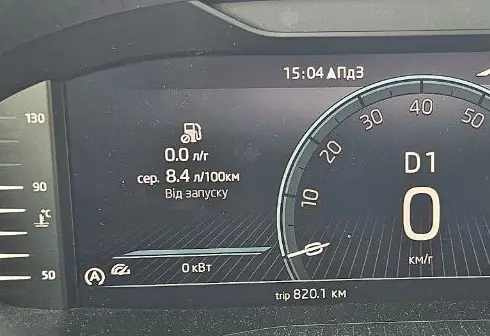© ROOT-NATION.com - Use of content is permitted with a backlink.
Greetings, friends! Today I’ll share my impressions after a week of using the Škoda Karoq. This review will include a few technical details, but mostly it’s about the car’s features based on my experience, personal observations, and some tips for potential owners of this model.
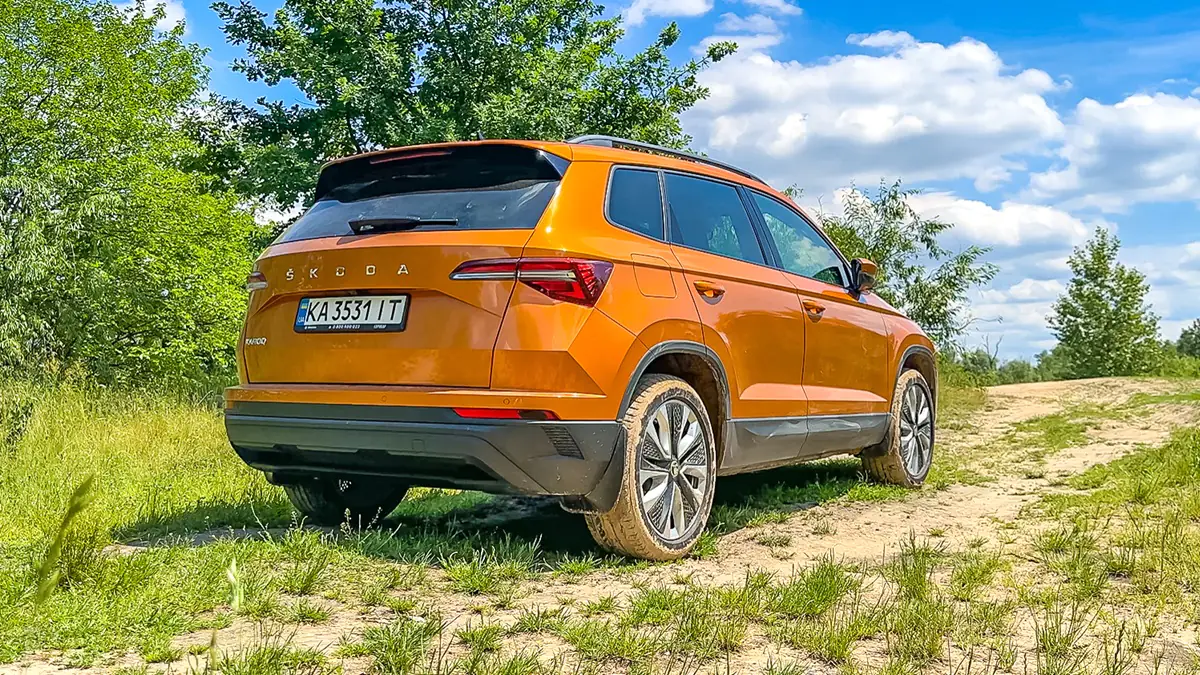

Škoda Karoq positioning
First, let’s try to understand the positioning of the model. The Karoq is a typical crossover SUV, and although it’s also available in a 4×4 version, the one I have for testing is front-wheel drive.
In Škoda’s lineup of crossover SUVs with internal combustion engines, there’s also the smaller Kamiq model, making the Karoq the middle option between it and the larger Kodiaq. So, it’s positioned as a mid-size urban crossover.
Read also: Škoda Auto presented an updated version of the Superb
Design and exterior
Overall, the car doesn’t look small from the outside, but it actually has quite compact dimensions, which makes parking easier in urban conditions.
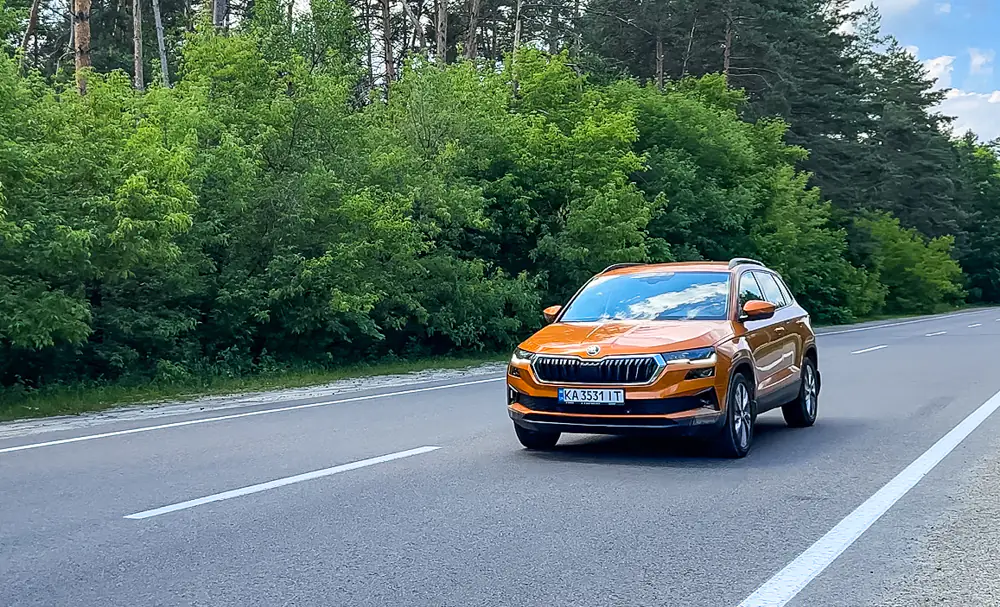
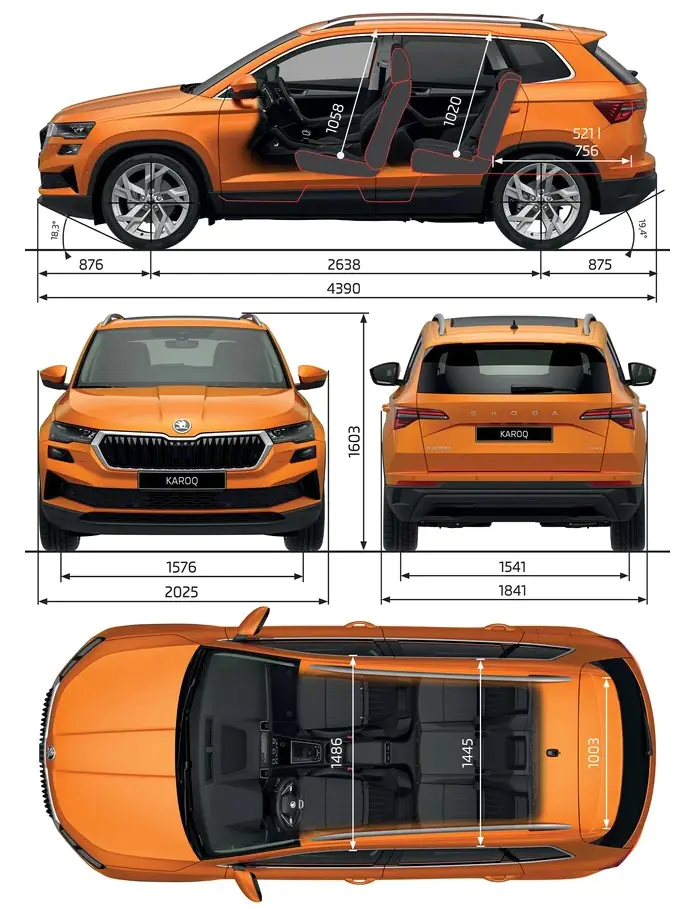
Appearance
The design of the Škoda Karoq is modern yet conservatively classic. If you’re not into Asian trends in car design, you might appreciate this option.
Overall, in my opinion, the exterior of the Karoq is very balanced – stylish, slightly sporty with a touch of aggression, but without going overboard. And most importantly, it’s recognizable as typical of the Škoda brand.
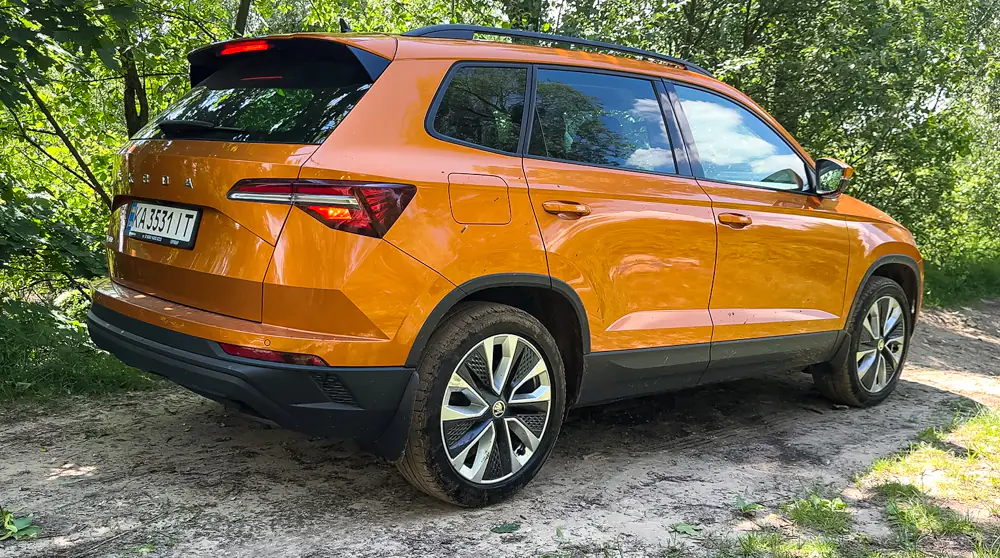
Undoubtedly, the most distinctive element of Škoda’s design that ensures its recognizability is the radiator grille with a chrome frame.
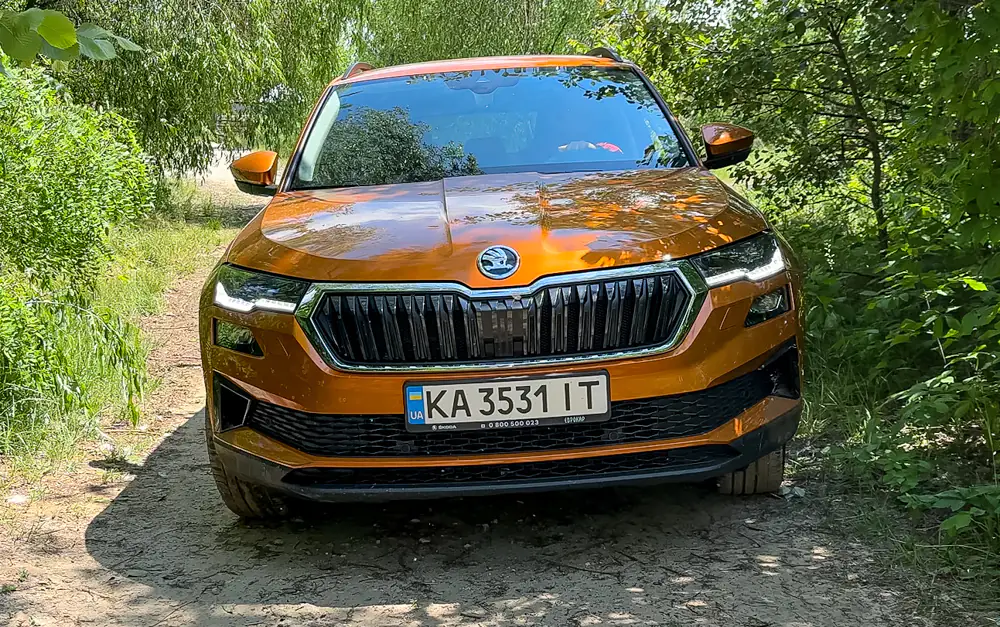
Main headlights
One of the coolest features of the Škoda Karoq that I really liked is its main headlights, which are fully LED – including the low and high beams, daytime running lights, and indicators.
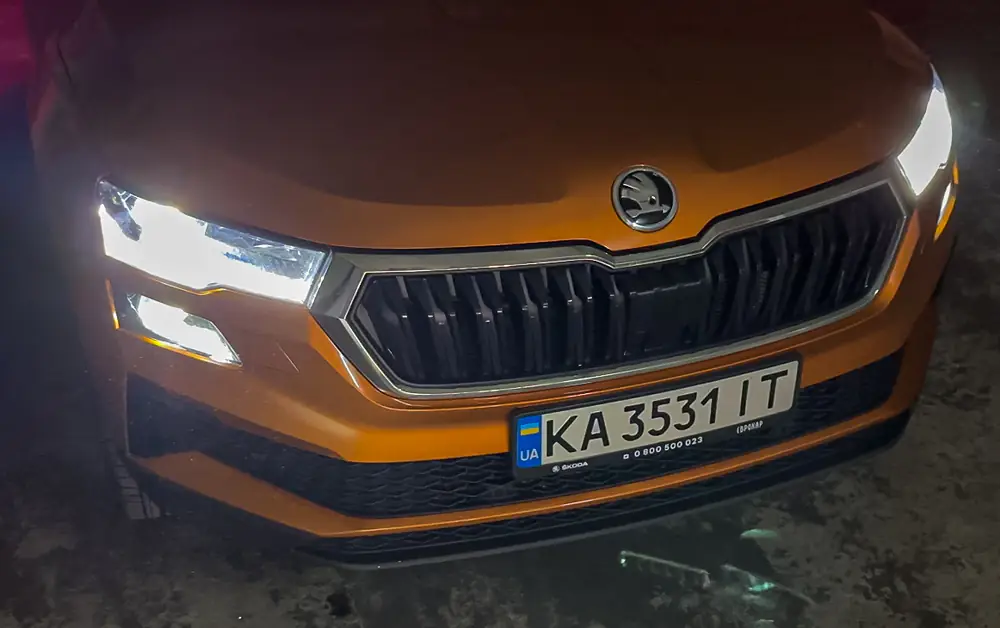
The headlights are smart, featuring matrix cut-out technology and automatic high beam. A camera mounted under the windshield provides intelligent vision – it monitors oncoming and passing vehicles on the road and controls a system that shades the lighting areas so as not to blind surrounding drivers.
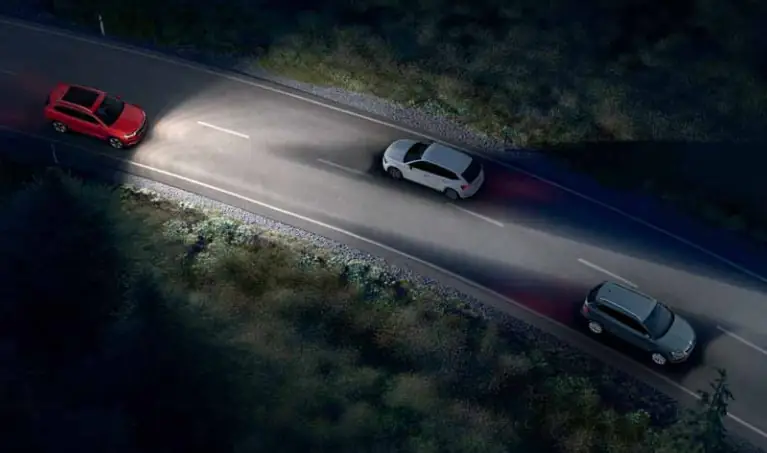
At the same time, the headlights also turn with the steering wheel to better illuminate the turn area. Overall, the headlights are absolutely top-notch here. I even felt a bit envious of all European drivers because in my American car, features like automatic switching between low and high beams are the only comparable ones.
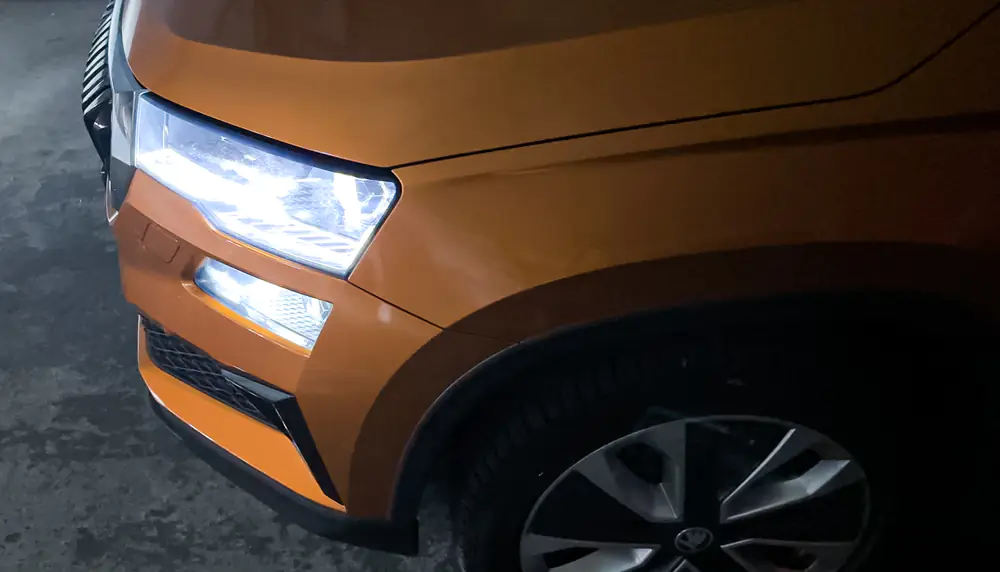
Front parking sensors
Below the bumper grille, you can see 4 front parking sensors. Unfortunately, there is no front camera in this configuration. The parking sensors work quite adequately, no complaints.
Side mirrors
Moving on – the side mirrors with LED turn signal repeaters have an automatic dimming function, full power adjustment, and can be manually or automatically folded.
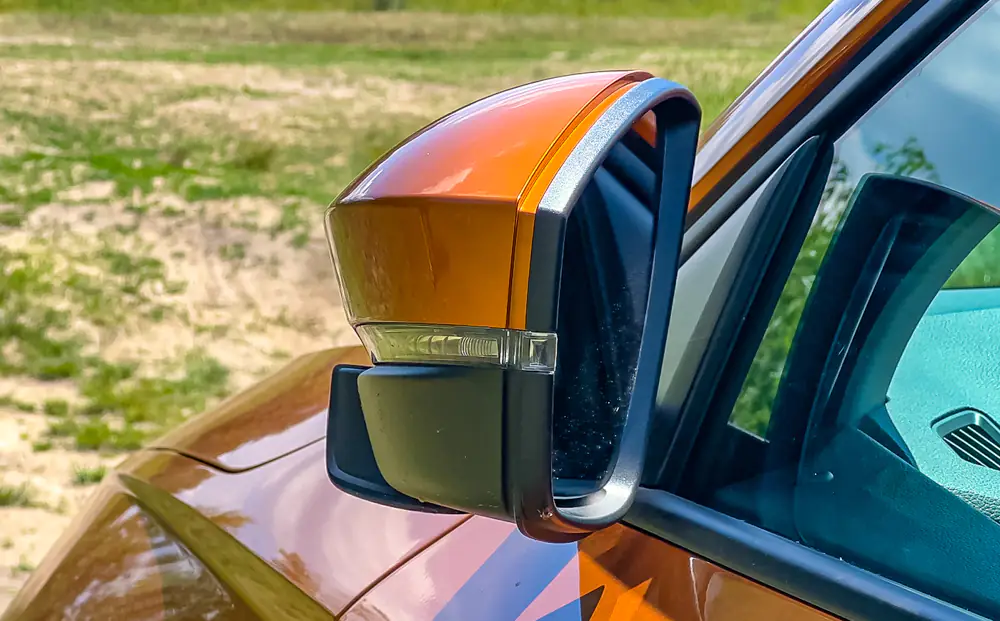
Door handles and locks
All four door handles support keyless entry. This means you simply need to keep the key in your pocket or purse, approach the car, and upon touching any handle, the lock opens instantly. To lock the car, you just need to lightly press your finger on a specific indentation on the handle. This is also a nice detail because it prevents accidental locking of the doors when you don’t intend to.
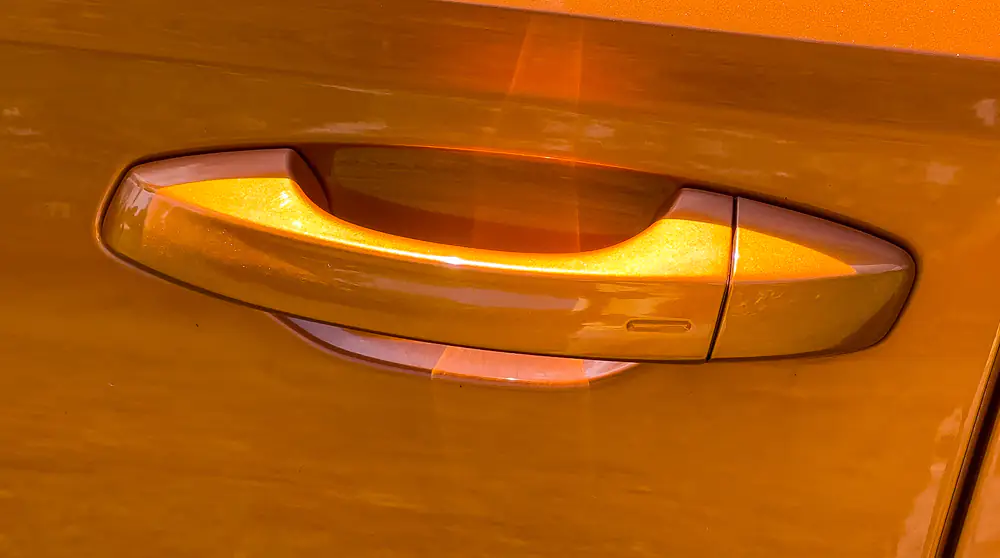
If you open the doors in the dark, you can see the brand’s logo illuminated on the ground. It’s a pleasant and stylish detail.

The rear doors are equipped with child locks – if you activate the switch on the edge, the doors can only be opened from the outside.
Wheels
Since we’re here, let’s take a look at the wheels. The Karoq is available with 16, 17, and 18-inch alloy wheels. Our copy is equipped with the largest 18-inch wheels with aerodynamic plastic pads, and accordingly, tires with a minimum profile height. This, as you can imagine, makes the car feel stiffer on the move, but improves handling.
For city roads, I really like this option, but if you prefer a softer ride or plan to use the car on rough roads or off-road, consider opting for smaller wheels with tires that have a higher profile.
Rear lights
Let’s move on to the rear part of the car. Here, we are greeted by stylish full LED tail lights. Besides looking very cool, they also feature dynamic turn signals and an impressive animated function for greeting and saying goodbye to the owner.
Trunk lid and rear parking sensors
The trunk lid is equipped with an electric drive, which is also pleasing. In addition to the physical button for opening, there’s a virtual one – you can simply “kick” under the bumper. This is very convenient when approaching the car with your hands full.
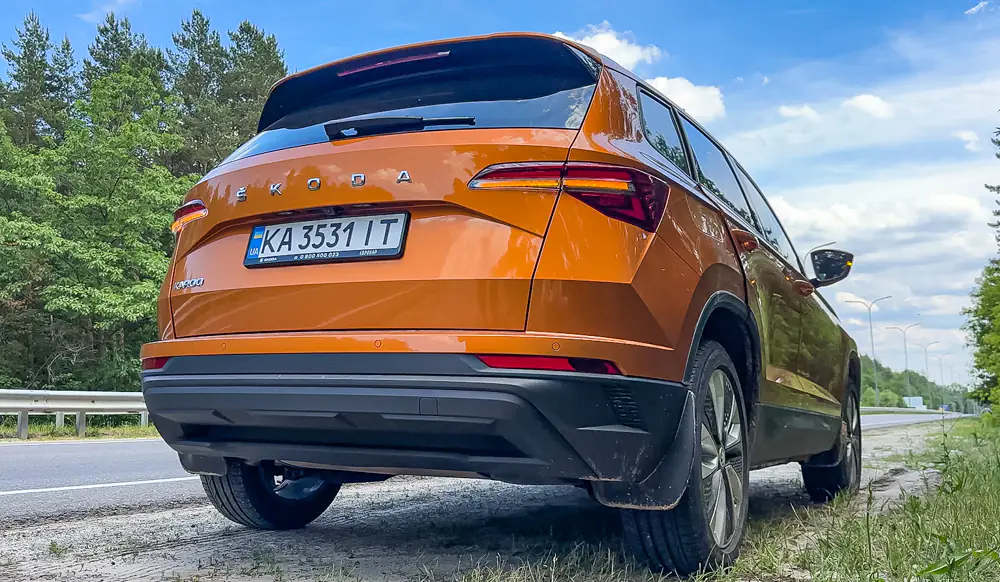
You can also control the trunk lid with a button on the key fob. The first press opens the trunk, and a second press provides the additional ability to stop the lid at any position. This is useful if something is obstructing the full opening of the trunk from above.
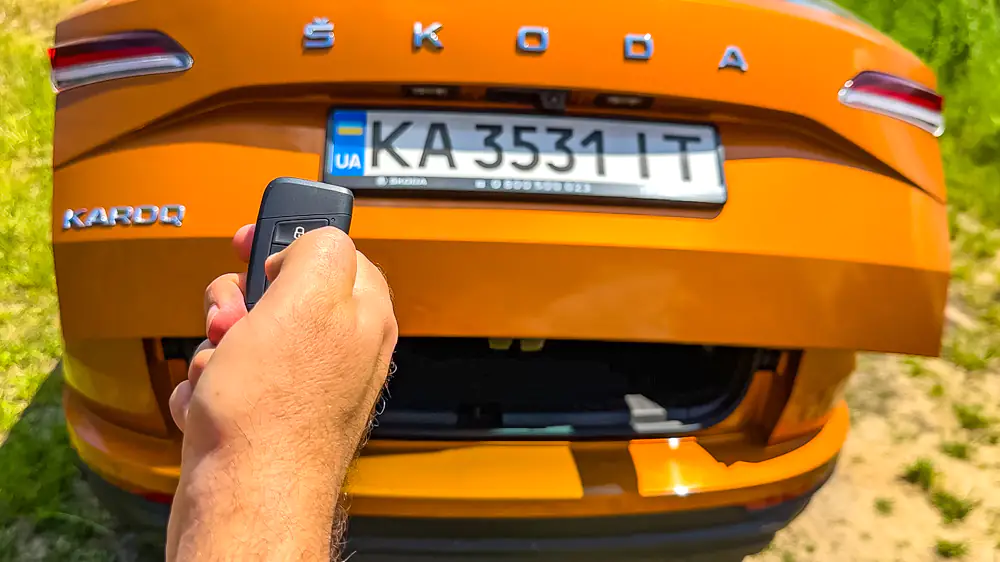
To close the trunk, you need to press and hold the button. If you release it, the lid will also stop. Overall, everything is very well thought out. There are various methods of controlling the trunk: opening, closing, and stopping the lid at any position.
The trunk button is completely sealed and located in a niche under the Škoda emblem above the license plate. Here, a rear-view camera is also installed. The license plate illumination is LED. A row of four rear parking sensors is located in the upper part of the bumper.
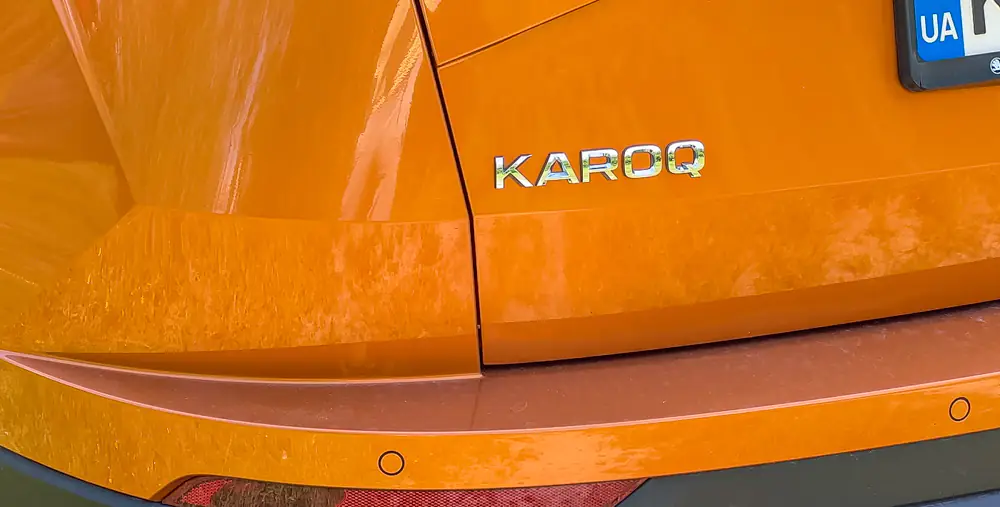
Read also: Hyundai Ioniq 5 N shows its brute power on the track against some supercars
Luggage compartment of the Škoda Karoq
Let’s take a look inside the trunk compartment while we have the chance. It’s equipped with an upper cover that lifts and lowers with the lid. I can also mention the pleasant soft trim on the walls of the compartment, useful compartments with straps for securing accessories, and hooks on the railing.

At the bottom, we see a rigid floor cover under which there is a styrofoam organizer with accessories (wheel wrench, jack, funnel) around the spare wheel in the form of a temporary spare tire.
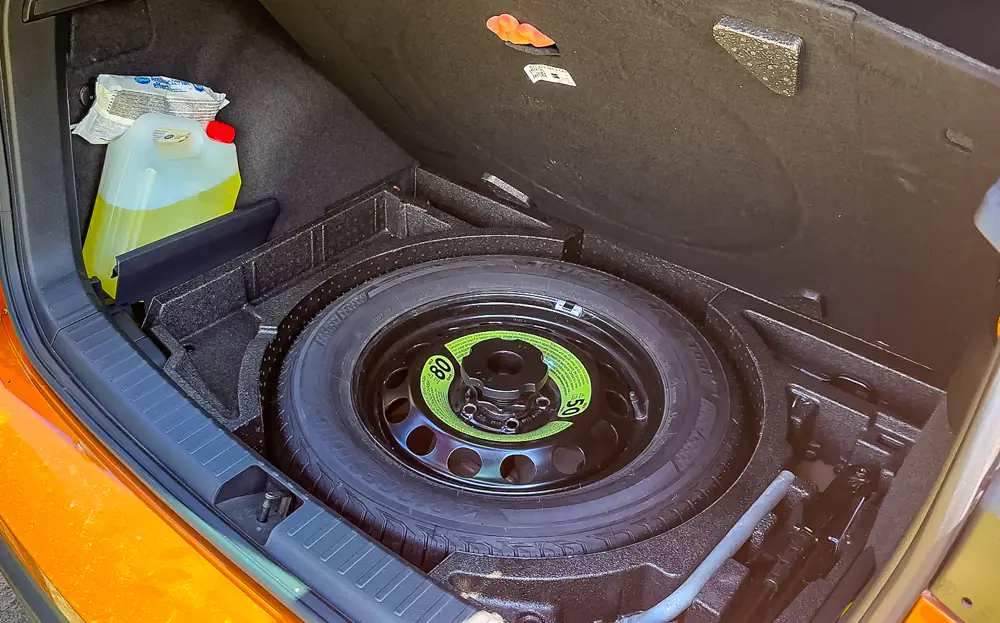
In my opinion, the trunk volume is average, but it can be increased by folding down the rear seatbacks. You can also open just the central section if you need to transport a long item and the length of the trunk isn’t sufficient.

The trunk lighting is also LED, but unfortunately, there’s only one lamp above the pocket on the right side. Because of this, the overall level of illumination is average, and I wish it were brighter. However, I think this is a common issue in modern car manufacturing.
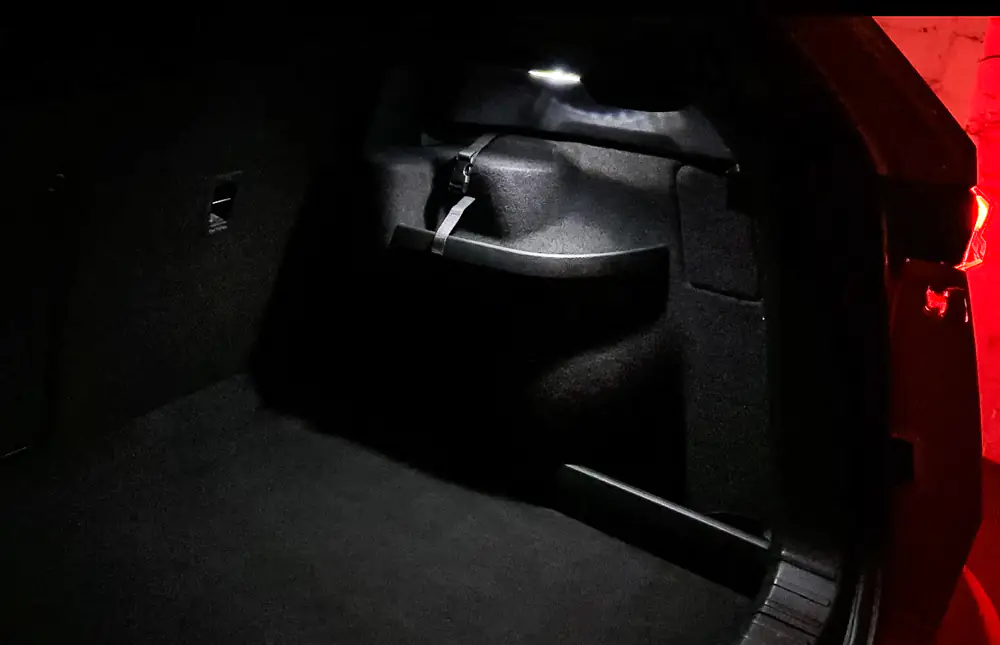
Under the hood – 1.4 TSI engine (110 kW 150 hp)
I don’t see much point in detailing the powertrain, especially since the Škoda Karoq is available in various configurations with petrol and diesel engines. If you’re interested, you can find all the technical information on the website of your local official dealer or on specialized websites that discuss the specifics of engines and mechanisms.
I’ll briefly share my impressions of the engine bay from the perspective of an ordinary owner. Firstly, there are no hydraulic struts here, which surprised me a bit the first time I opened the hood. I expected the hood to start moving upward on its own when lifted, but it didn’t. Instead, you need to lift the hood fully by hand and then prop it up with the support. It’s a minor detail, really.
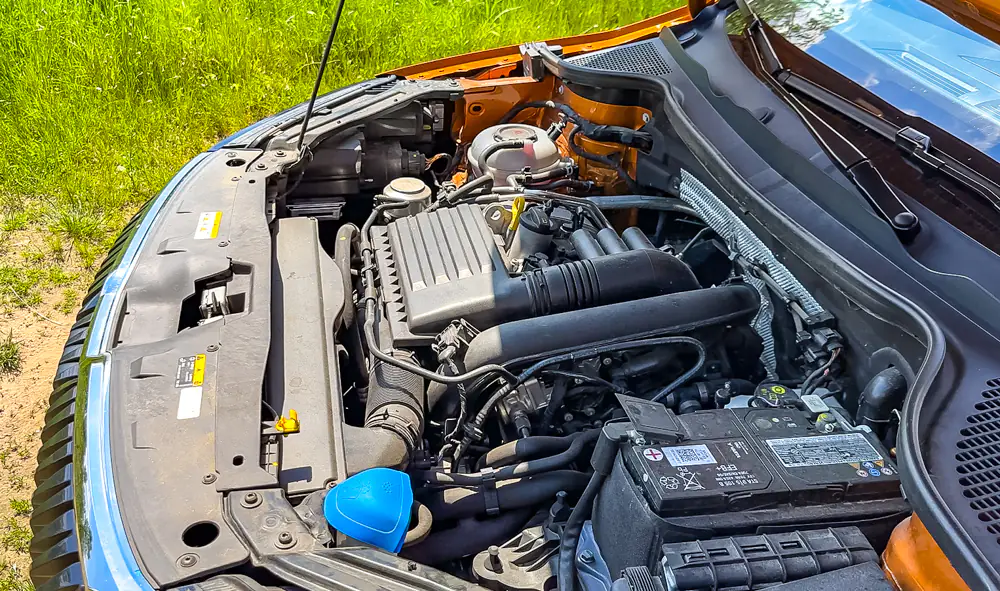
Furthermore, under the hood everything looks neat and tidy. The fluid fill points are easily accessible and conveniently located. Access to the battery is also straightforward and convenient. I particularly liked the filler neck for the windshield washer fluid reservoir with its built-in soft funnel. It’s such a simple yet useful solution that I think should be standard in every car.
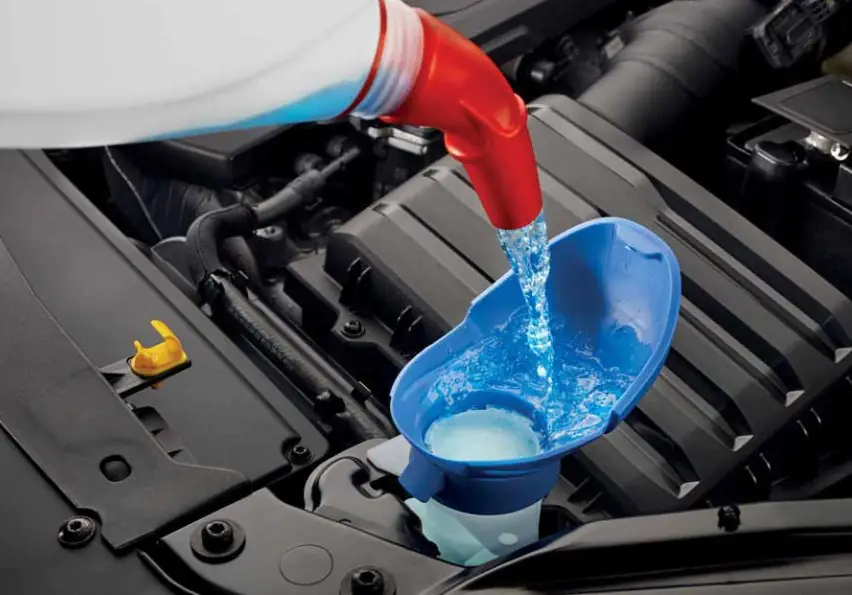
By the way, not entirely related but close enough: under the fuel filler cap, you’ll find a compact ice scraper included. It’s a small detail, but it shows genuine consideration for the buyer.
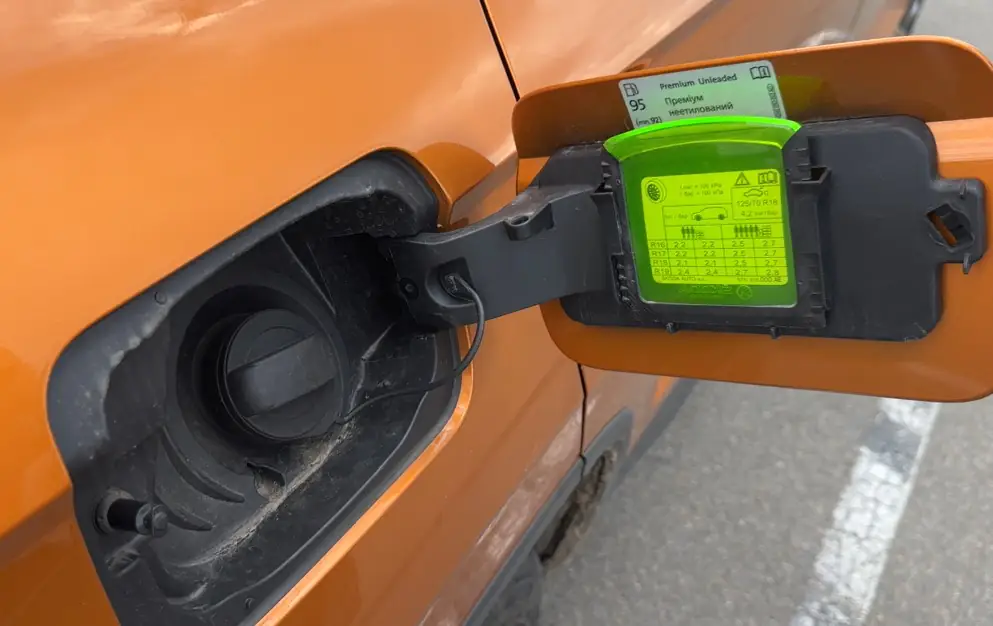
Interior of the Škoda Karoq
For the interior trim, the manufacturer uses several types of plastic, soft vinyl, textile, synthetic leather, and a material that mimics alcantara. Overall, I wouldn’t describe these materials as very premium, but they look and feel high-quality and practical.
It’s worth noting that I’m testing a 2022 car with more than 20 thousand kilometers. And nothing creaks or knocks in the cabin while driving, which generally indicates a high-quality assembly. In general, it should also be noted that the cabin is quite quiet, the level of noise insulation is clearly above the class average. When driving around the city, you can talk to passengers or on the phone without significantly increasing the volume of your voice – for me, this is one of the main indicators of comfort in a car.
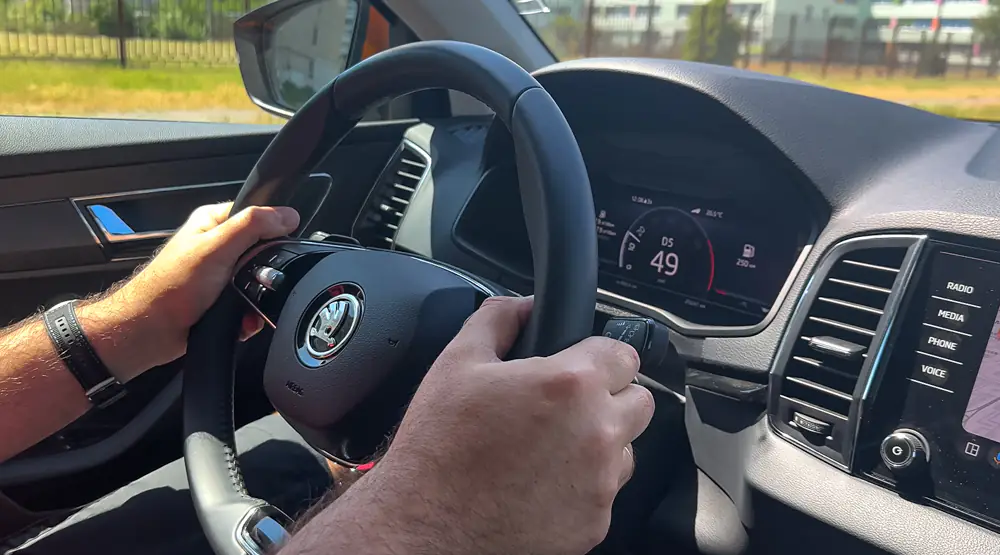
In the dark, ambient interior lighting operates throughout the cabin—illuminating all control elements and critical areas under passengers’ feet.
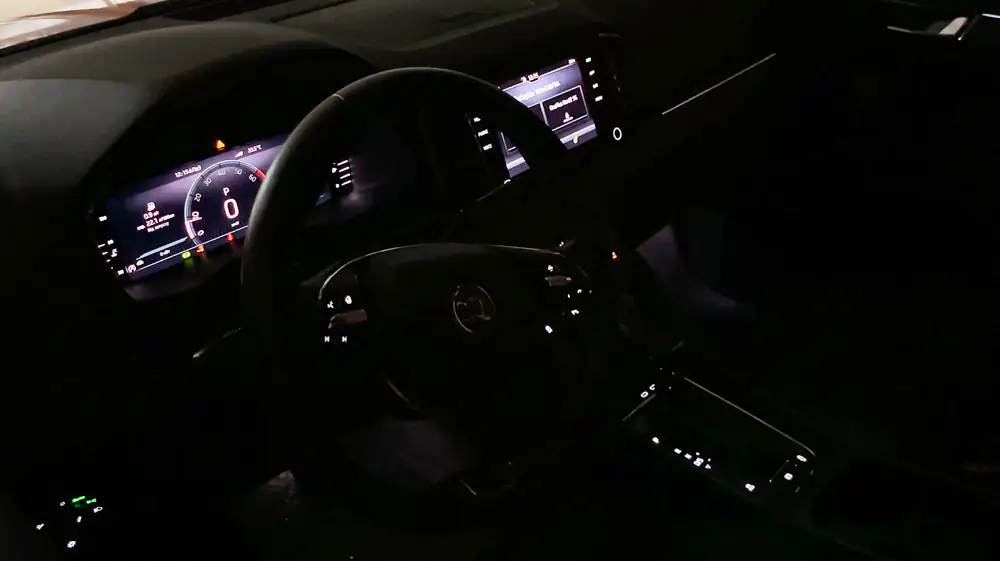
Doors, maps
The interior door trim is quite appealing, consisting of a soft upper section, a plastic panel with a pocket and bottle holder, carbon-like inserts, and silver door handles. The main handles are also plastic with armrests covered in eco-suede. Each door is equipped with an electric window control button. The driver’s door includes a control panel for all doors, a button to lock the window controls, electric adjustment, folding and heating functions for the side mirrors.
Another interesting detail: the storage compartments in the front doors are additionally equipped with rubber straps to secure items.
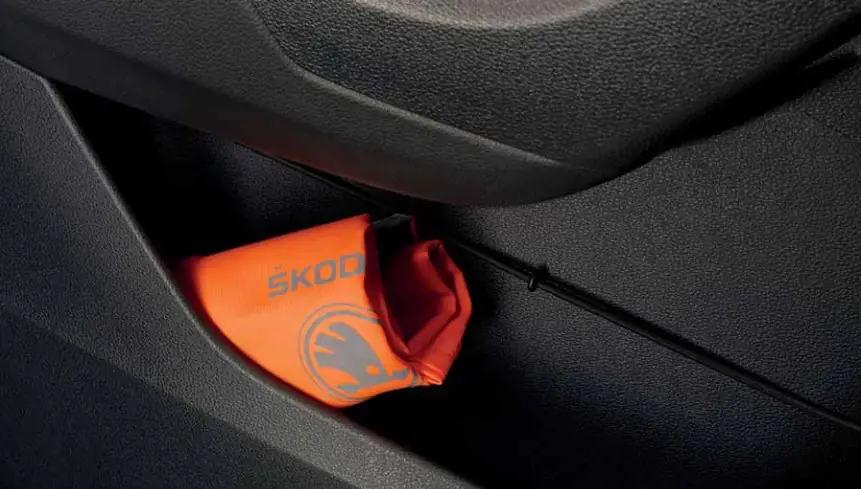
Front seats
The seats are quite comfortable, with decent lateral support. The upholstery material is a combination of faux leather, faux alcantara inserts, and fabric in the center. Both the driver’s and front passenger seats feature full electric adjustment using three joystick buttons. The third round button adjusts the lumbar support position, and what I liked is the additional option to adjust the vertical position of the seat cushion. There’s also a driver’s seat memory with three slots, which is very convenient for multiple drivers. However, there’s no easy entry function where the seat moves back automatically.
Rear seats
I can’t say much about the rear seats, but I have no complaints about them. They are fixed and non-adjustable. In terms of design and materials, they mostly mirror the front seats, albeit without significant lateral support. The seats are equipped with two sets of ISOFIX anchors for installing child seats. In the center, there’s a third seat with a headrest and safety belt. When not in use, you can utilize the fold-down armrest with cup holders. Below, on the central console, there’s a climate control panel for rear passengers and a 12V socket.
Dashboard and storage compartment
The dashboard is covered in soft vinyl with a faux leather texture. In the middle on top, there’s a glove compartment with a lid. On the right side, there’s a main storage compartment illuminated for storing items.
Steering wheel and steering column
The steering wheel is wrapped in smooth genuine leather, featuring an ergonomic shape with finger rests. On the two horizontal spokes, you’ll find multimedia control elements, buttons for voice command activation, and steering wheel heating on the left, and interface control for the instrument panel on the right.
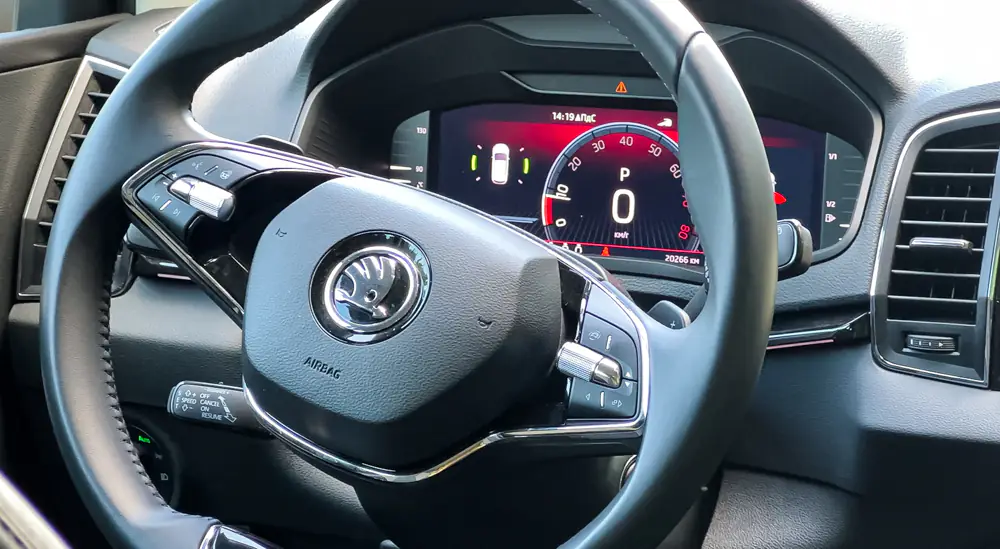
The steering wheel controls are very intuitive because each block in the middle has rotary dials that separate the blocks horizontally. Additionally, there are four buttons positioned both above and below these dials, with vertical dividers integrated between them that are easily distinguishable by touch. This tactile feedback makes it easy to locate all the controls without needing to divert attention from driving after a short period of adjustment, allowing for seamless operation of necessary functions.
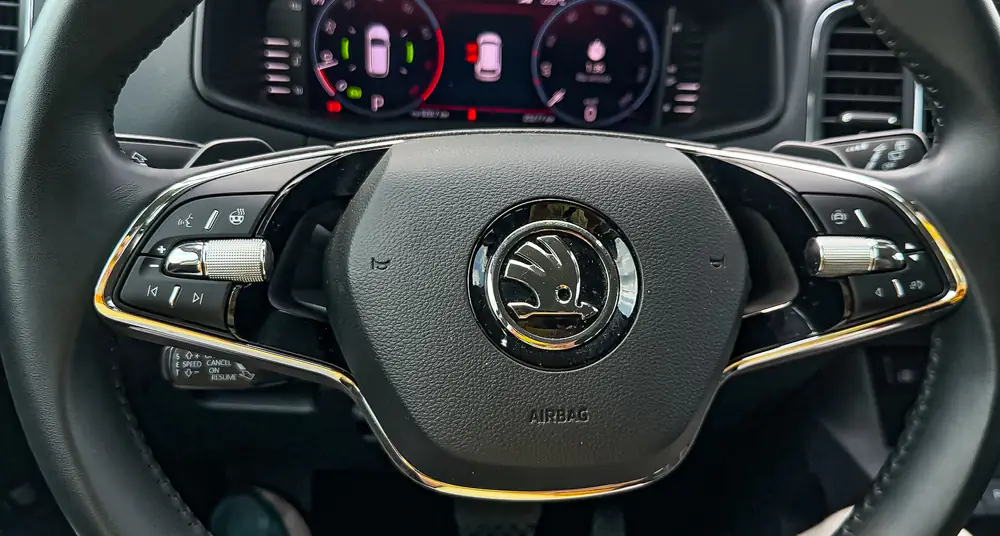
Below the steering wheel, there are paddle shifters for manual gear shifting and three traditional stalks: light and cruise control on the left, and windshield wiper control on the right. The steering column position adjustment is mechanical.

Škoda Karoq dashboard
The instrument panel is modern, featuring a fully digital 10-inch screen that is bright, high-contrast, and clear.
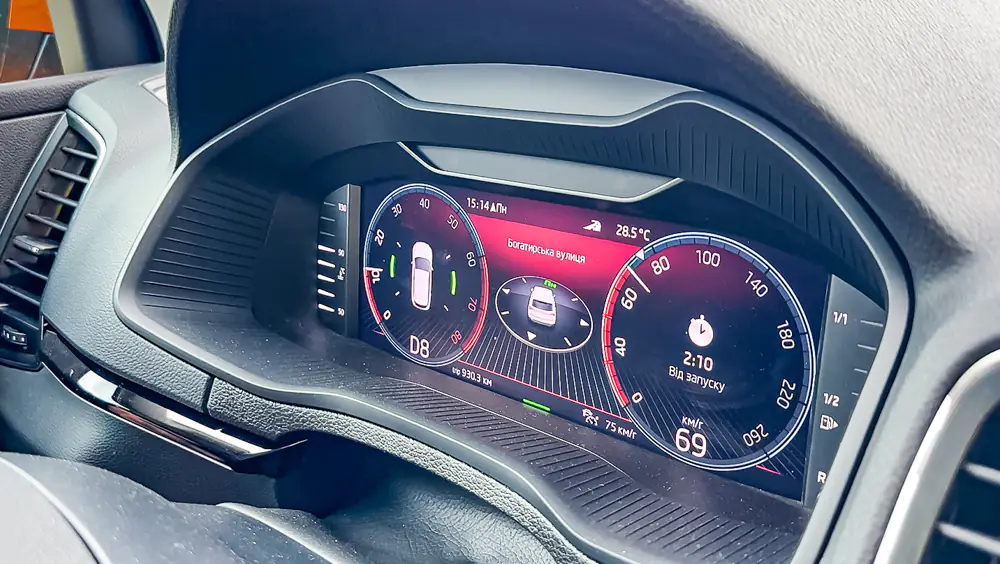
The dashboard has many skins with different information content, for example, just the speedometer or the speedometer and tachometer, and displays all the necessary data in various combinations – the current gear, driving mode, instantaneous fuel consumption, odometer, power reserve, and much more.
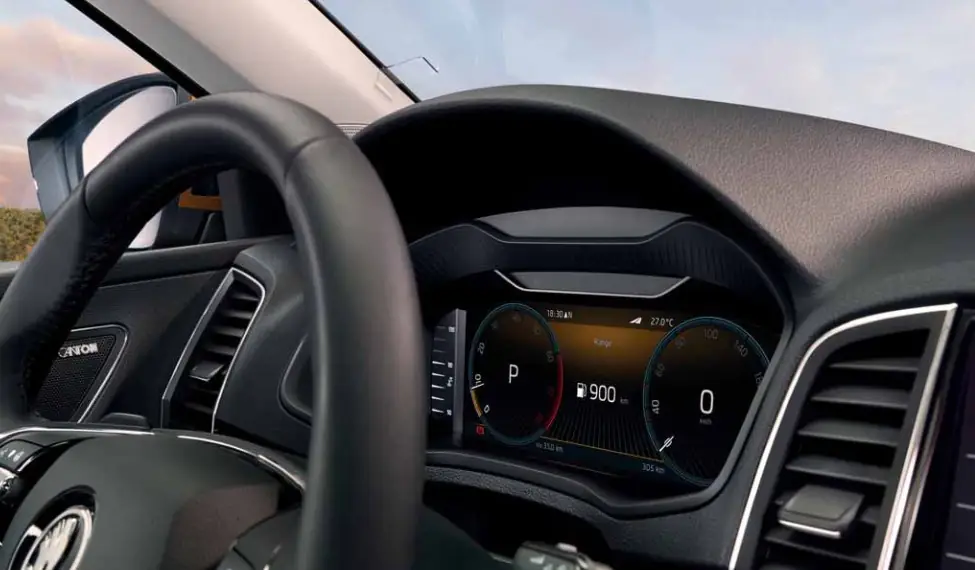
The instrument panel offers various settings and is highly customizable. It allows displaying data from the built-in navigation or multimedia system, making it very modern, convenient, and informative.
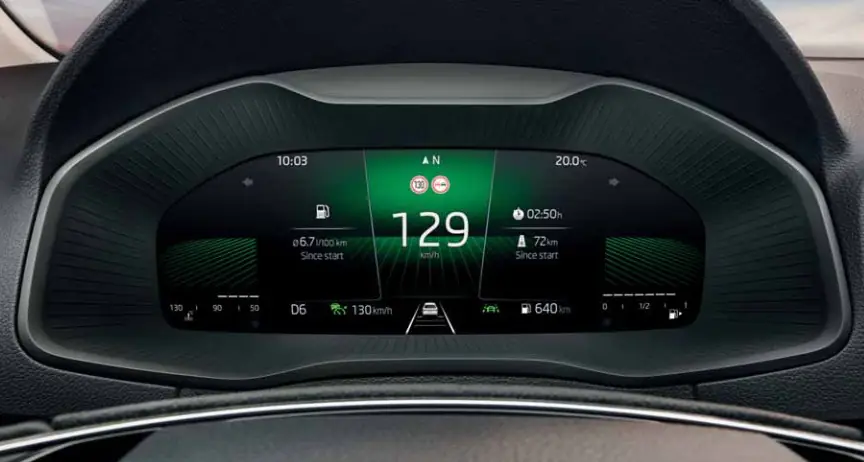
Multimedia display and entertainment system
The additional high-quality 8-inch touchscreen positioned centrally on the dashboard serves as the multimedia system and vehicle function interface. It provides quick access to menu sections duplicated by touch-sensitive buttons located to the right and left of the screen.
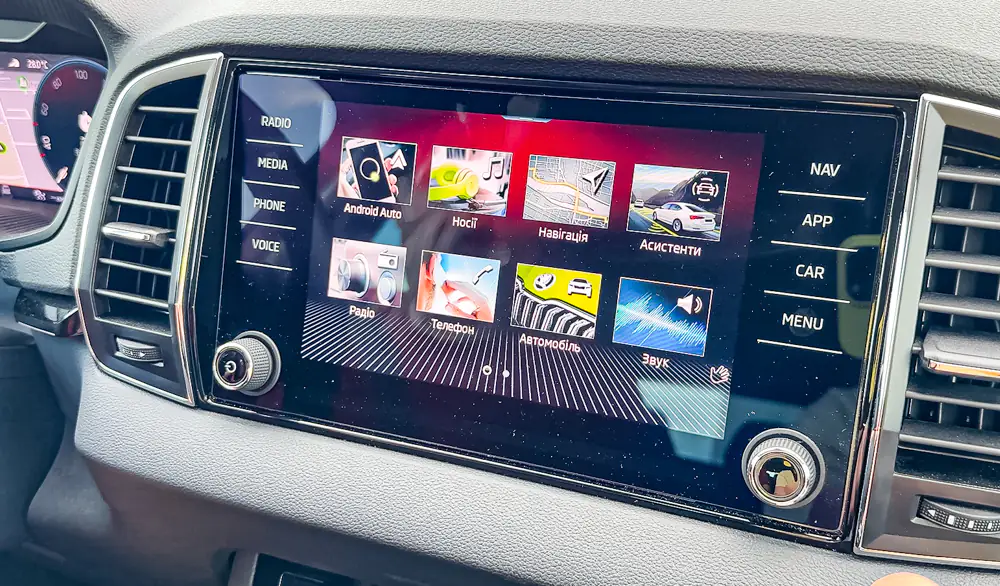
Below the screen, there are also 2 scroll buttons. The left one controls the volume or mutes the sound completely with a press. The right one duplicates the navigation functions on the main interface. This knob can completely replace touchscreen control if you don’t like fingerprints on the screen or simply find mechanical control more reliable and intuitive.
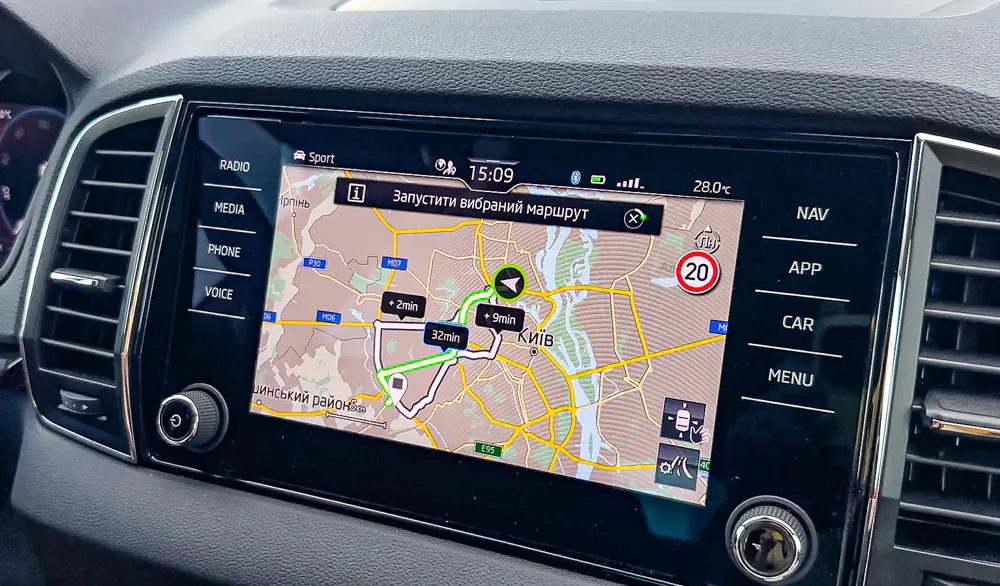
Talking about the interface could go on for a while, but the ability to conveniently and quickly connect a smartphone to the multimedia system, which surpasses the main built-in functions, is crucial. So, briefly – there’s the main settings menu for the vehicle systems, built-in navigation, a music player, and a radio receiver displaying station names. There’s also a menu for managing phone calls with phonebook synchronization. For convenience, if the car is used by multiple drivers, you can set up a personalized profile for each user.
Connecting a smartphone
The onboard system supports wireless Apple CarPlay and Android Auto connections. The initial setup is extremely straightforward. Simply access the Bluetooth menu on your smartphone, then find your smartphone in the car’s menu under available devices and select it. After this, almost all functions of the built-in system become unnecessary in my opinion. You simply get into the car and automatic connection occurs; you are greeted by the familiar interface with your smartphone’s apps.
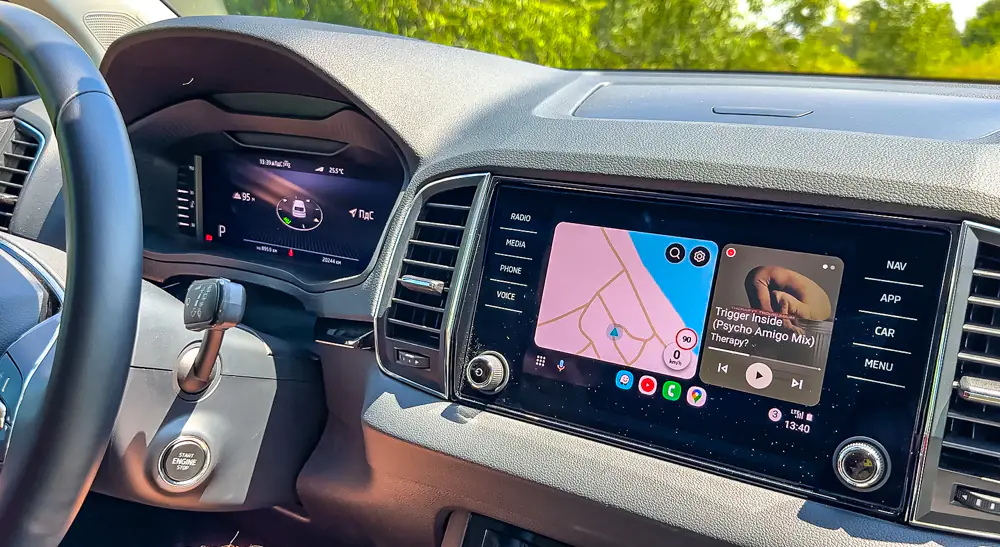
However, if you are a conservative user, you can use simple smartphone connection via Bluetooth for hands-free calling or playing music from your mobile device through the car speakers.
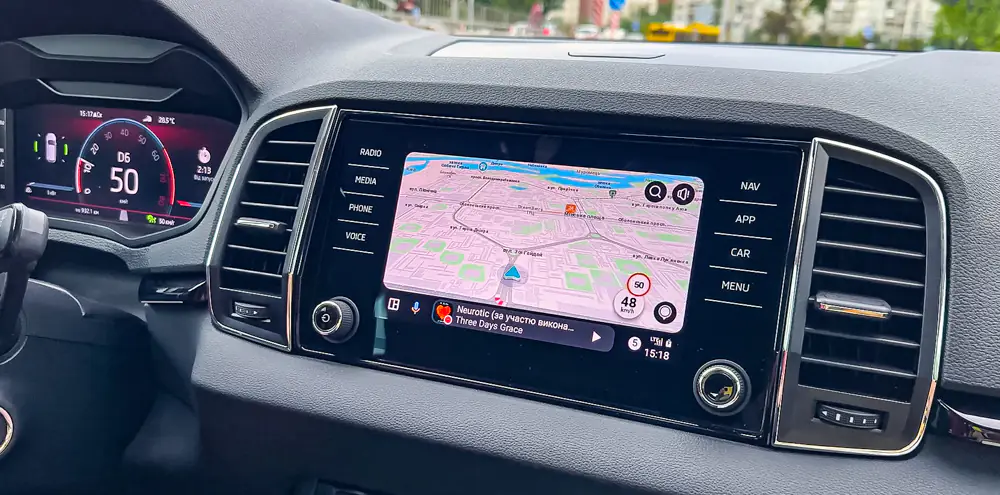
Wireless charging and USB
If your smartphone supports wireless charging, simply place it in the dedicated compartment under the dashboard, located in front of the gear lever. This allows you to keep your smartphone charged at all times, even when using navigation extensively. Additionally, in this area, you have access to 2 USB-C and 1 USB-A ports for charging smartphones and other devices, or for connecting USB flash drives with music to the car system. There’s also a 12V socket with a cigarette lighter (a bit of an anachronism, in my opinion).
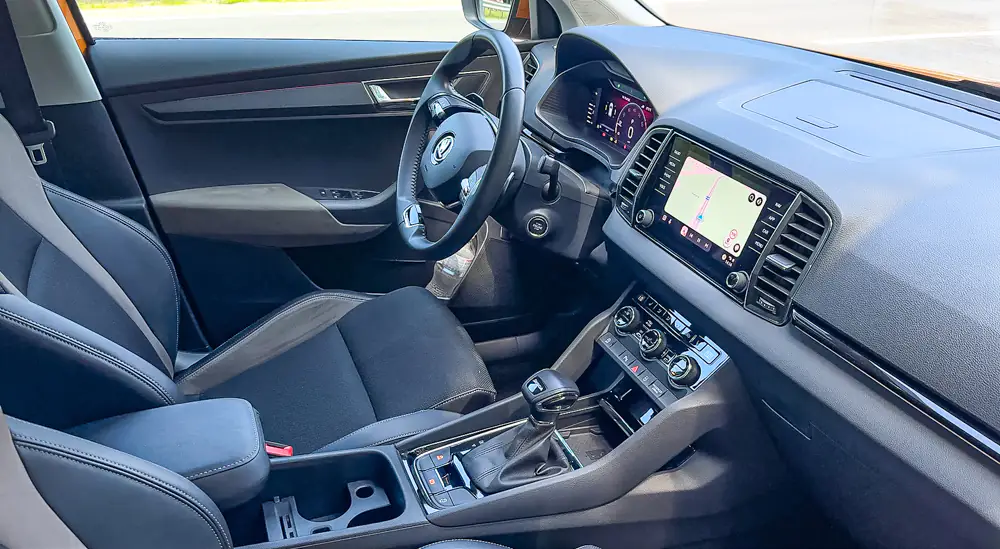
Audio system
Briefly put, we have 2 main speakers in the front doors and another 2 in the rear doors. Our Škoda Karoq configuration does not include a separate subwoofer. Personally, I wasn’t impressed with the sound system because the bass is simply lacking, no matter how you adjust the equalizer. If you’re an audio enthusiast, this will likely be a concern that you’ll need to address separately after purchasing the car.
Comfort and safety control panel
On this panel, you won’t find anything unusual – no touchscreen elements, just light indicators, mechanical buttons, and knobs. And that’s great because it’s simple, reliable, and safe. Personally, I dislike touchscreen controls, if you ask me. The only complaint about this unit is the use of glossy plastic.
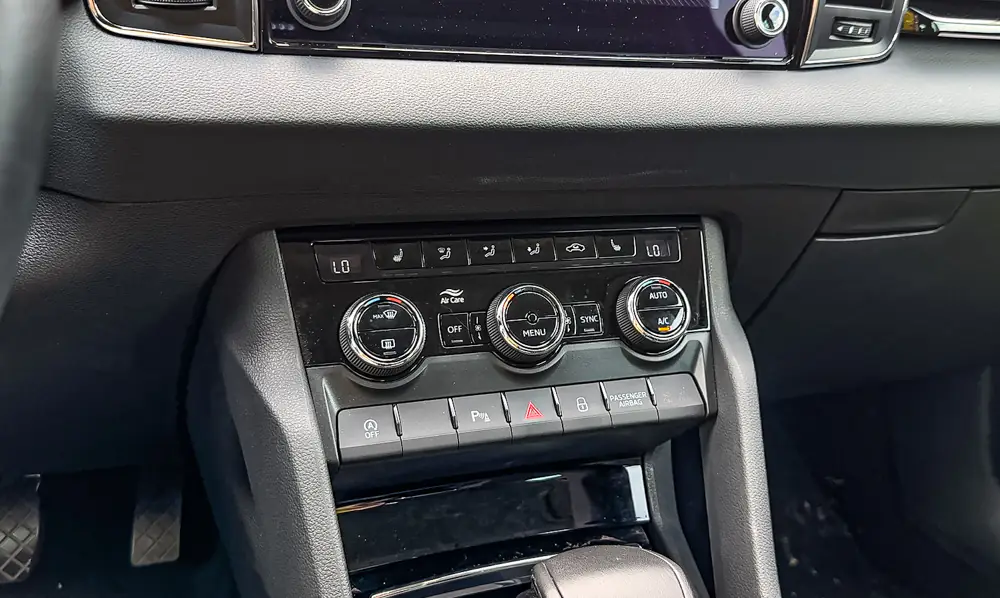
In our test Škoda Karoq configuration, there is a dual-zone climate control with the ability to synchronize zones and all standard functions like changing the airflow direction and intensity. It also includes seat heating and rear window defrosting. Unfortunately, there are no seat ventilations here, but considering the class, it shouldn’t really be expected. Below, there is a row of buttons for enabling and disabling the start-stop system, temporarily deactivating parking sensors, hazard lights, and central locking.
Gear shift lever
This standard car element is designed in a classic style with a large handle that moves mechanically forward and backward. Everything is standard here – parking, reverse, neutral, drive. A short press backward at the extreme “D” position switches the gearbox to sport mode “S”; repeating the action returns it to normal drive mode. The handle is sturdy and ergonomically shaped, with a side unlock button conveniently placed under the thumb. Both the handle and lever are adorned with genuine leather, surrounded by a panel of glossy plastic.
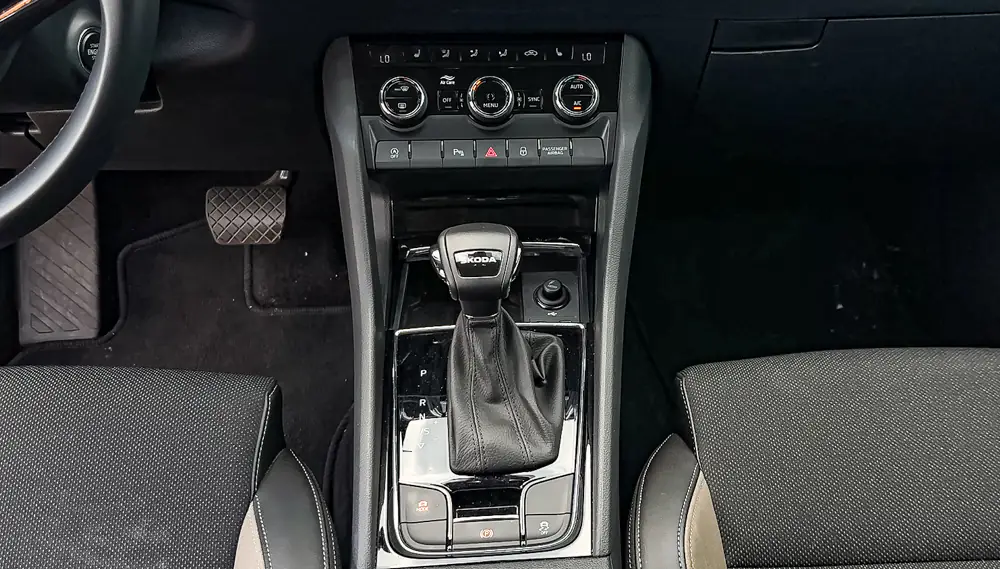
Next, we have several buttons: drive mode selection (normal, sport, economy, custom), electronic parking brake activation, and traction control system deactivation.
Center console
Here we have a compartment with an organizer and a removable cup holder. Additionally, there’s a tilting armrest with height adjustment that also slides forward. Underneath it, there’s space for storage, suitable for items like a small bag or purse.
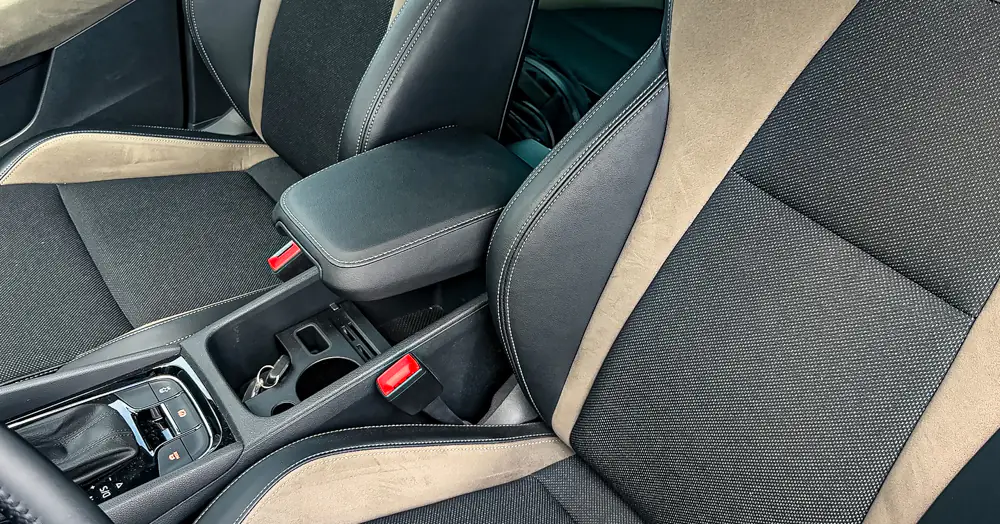
Top console with lighting and ceiling
At the top front, above the intelligent camera, there is an overhead console with two LED lights and power buttons. It also houses interior lighting sensors, microphone for hands-free communication, and a compartment with a cover for storing glasses.
Several additional lights are located under the sun visors. They activate when the visor mirror covers are opened. Additionally, there is a ceiling light unit for passengers at the rear of the car. Of course, all the lamps are LED. The ceiling of the car’s interior is in white color, typical fabric with a large weave pattern commonly used by most manufacturers.
Read also: Škoda Auto has updated the hatchback and station wagon versions of the iconic Octavia model
Impressions of operating and driving the Škoda Karoq
Dynamics
I’ll explain right away that I switched to the Karoq from my personal car with a 250 horsepower engine, so initially, everything seemed quite disappointing to me. While I’m not a fan of racing in the city, having extra power can sometimes be necessary and can save you in critical situations. Therefore, in contrast, at first, I had the impression that the 1.4 TSI “roars but doesn’t go.” However, gradually, I began to study and understand this engine better, and now I can say that paired with the 8-speed gearbox, it’s very practical for everyday use.

Yes, the crossover accelerates quite modestly in city driving—9 seconds to reach 100 km/h isn’t particularly impressive compared to more powerful cars. However, if you desire, you’ll definitely be faster off the line than most typical cars with atmospheric engines ranging from 1.6 to 2 liters.
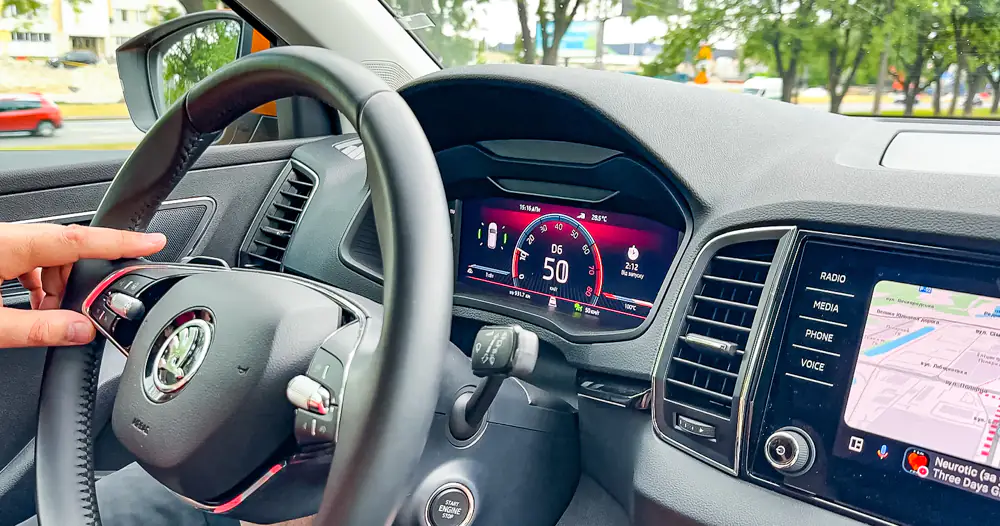
Also, when you’ve already reached speeds of 30-50 km/h and need to make a sudden maneuver for overtaking, the engine allows you to do so by simply pressing the gas pedal all the way down. The transmission immediately downshifts, and the car literally shoots forward, quickly accelerating to around 80 km/h. In urban conditions, this level of performance is quite sufficient. Moreover, such acceleration happens almost instantly, with hardly noticeable turbo lag.
To be honest, I didn’t quite understand the difference between normal and sport modes in the city. Switching to sport mode hardly affects instant acceleration while in motion, and driving at a constant speed in this mode doesn’t make much sense due to higher RPMs and delay in lower gears. Therefore, I recommend switching to sport mode only when, for example, you need to merge into fast-moving traffic from a secondary lane—when sharp acceleration from zero is required. Fortunately, the design of the transmission lever allows for quick and convenient switching between modes.
On the highway, the car accelerates quite well up to 100 km/h, then performs comfortably up to 140 km/h. Beyond that, acceleration slows down gradually up to 160 km/h. I’ve pushed it further to 188 km/h, but it was challenging, and it felt like the Karoq isn’t meant for sustained high speeds. However, the range between 100-140 km/h is quite comfortable on well-maintained highways, especially with cruise control.
Handling and stability on the road
I really liked the handling of the Škoda Karoq. It feels like you’re driving a hatchback rather than a crossover – there’s no noticeable body roll on uneven surfaces or significant body lean during turns. The suspension is very responsive and slightly on the sportier side, so you feel all the imperfections in the road surface. However, this could be due to the characteristics of driving with 18-inch wheels and low-profile tires. It’s something worth exploring further. If you’re considering the Karoq for purchase, I recommend conducting an additional test drive with different wheel configurations if possible.
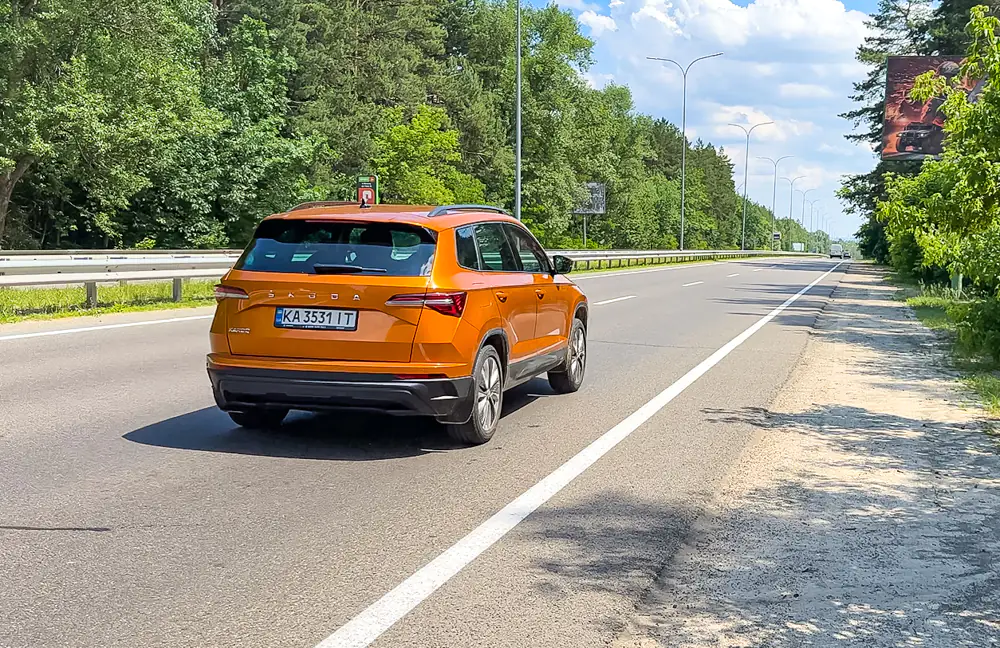
The stability of the car on the road is also impressive; you can enter tight turns without significantly reducing speed, provided the road conditions allow for it. In any case, in terms of handling and stability, these qualities in the Karoq are better than in a typical crossover, and I really liked that.
Fuel consumption
The flip side of using a small-displacement engine is its fuel efficiency. No matter how hard I tried, I couldn’t exceed 10 liters per 100 kilometers in fuel consumption in the city of Kyiv. This was under the most aggressive driving style I could manage within safety limits and typical city traffic congestion. If the goal is fuel economy, achieving 7-8 liters per 100 kilometers in the city is entirely feasible. However, I didn’t have the patience to conduct such a test; I operated the car closer to the upper limits of the engine and gearbox capabilities. Therefore, consider my fuel consumption figures as maximum values across all scenarios.
On the highway, it all depends on the speed. When you drive 80-110 km/h, the fuel consumption is about 4.5-6 liters per 100 km. If you drive faster, try to keep 140 km/h and a little higher – about 7-8-9 liters.
Comfort
The main point about the Škoda Karoq is that all comfort-related systems operate automatically and reliably, requiring minimal manual intervention. Once set up, they work seamlessly without the need for constant adjustment. For instance, the main lights—I never had to manually turn them on or switch them, except for using the turn signals. The fully automatic mode of operation is simply excellent. The same applies to the windshield wipers, air conditioner, music system, and interior lighting. As I mentioned before, the front seats are indeed very comfortable. The sound insulation is also quite good. All aspects related to the central locking system, keyless entry and start, as well as opening and closing doors and the trunk, directly contribute to the comfortable use of the car.
Safety
The high level of comfort logically transitions into safety considerations, because if you are less distracted by managing the car’s systems, you can focus more on driving and concentrate on road conditions. In addition to this factor, it’s worth noting that the Karoq is literally packed with state-of-the-art solutions for both passive and active safety. It’s no surprise that the Škoda Karoq received the highest five-star safety rating in Euro NCAP crash tests. In fact, it comes equipped with a full set of safety airbags: front passenger and driver airbags, driver’s knee airbag, and side airbags.

However, automatic assistants and warning systems also play a significant role in safety: collision warnings, blind-spot detection, and more. These systems really work, and I even received a warning once when I saw a car suddenly activate its left turn signal ahead of me. I intended to change lanes quickly, but another car was there, partially in my blind spot, which I hadn’t seen clearly.
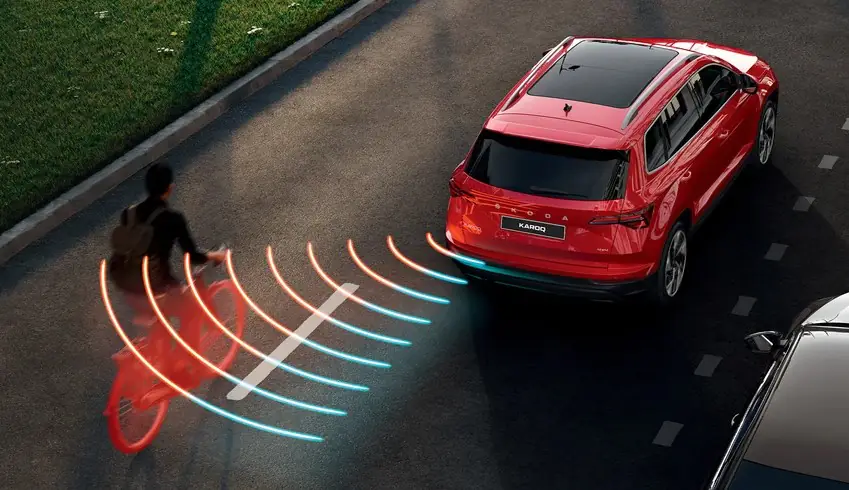
Another cool feature of the car, which is related to both comfort and safety, is the adaptive cruise control that operates up to a speed of 210 km/h. You simply set the desired speed and the distance to the preceding vehicle, and enjoy the ride.
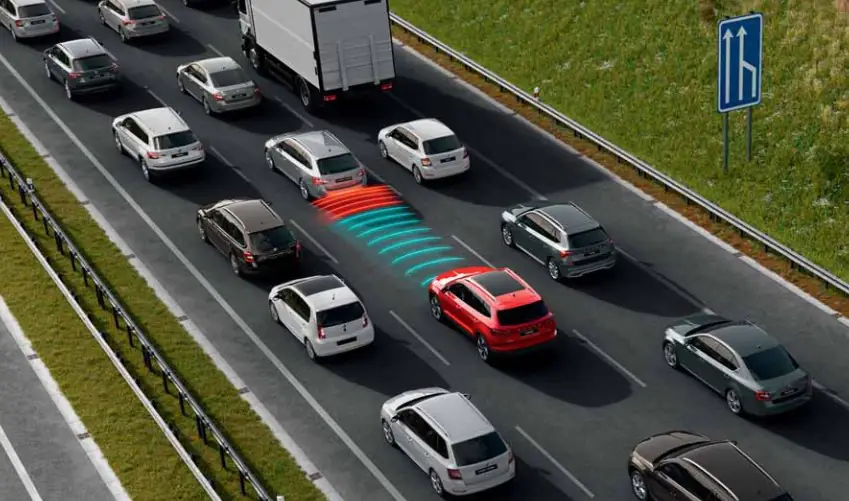
This assistant provides automatic stop and go functionality, making the cruise control system convenient to use both on highways and in urban conditions.
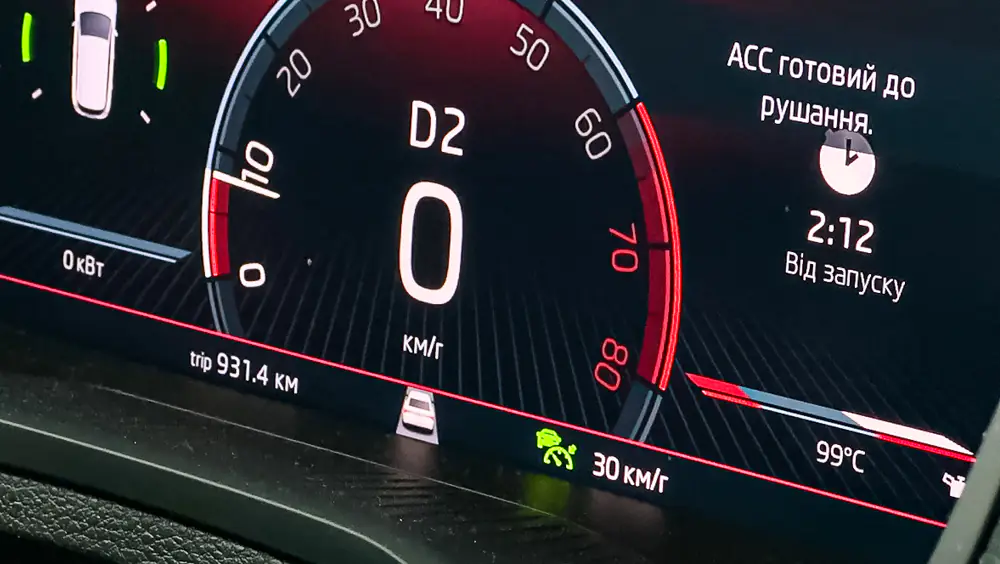
Of course, it’s also worth mentioning the parking assistant, which helps to choose the correct trajectory for parallel or perpendicular parking. Guidance prompts will be displayed on the main entertainment system screen.
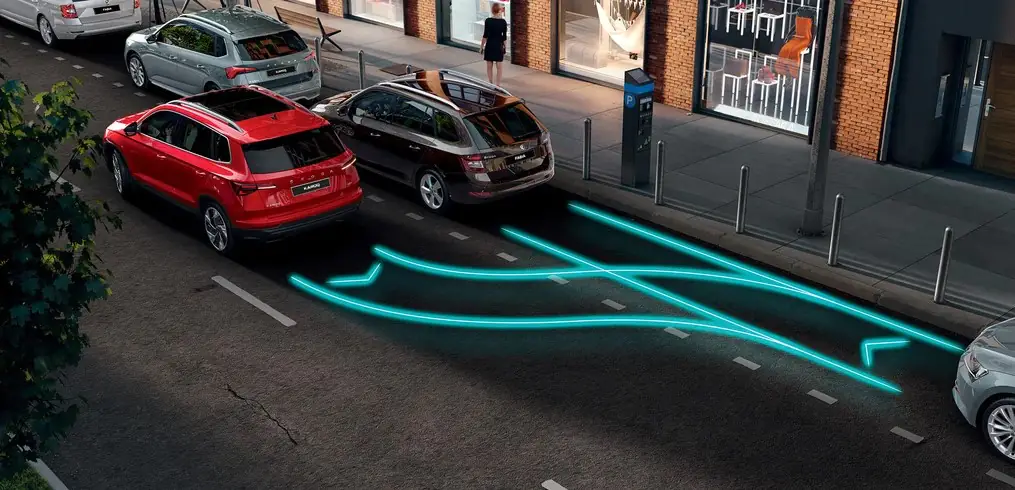
Read also: Self-driving cars: how long to wait for revolution?
MyŠkoda mobile application
Honestly, I wanted to try the MyŠkoda mobile app and tell you about it. But to add a car to the app, you need to be the primary owner and have both keys. So, unfortunately, maybe next time.

In general, from what I understand, the main functions of the app include remote locking of doors, vehicle location tracking, monitoring of key indicators and parameters, and service reminders. You can download the app from the official app stores for the respective platforms.
Android:
iOS:
Conclusions
Personally, I rather liked the Škoda Karoq crossover, because it has many positive aspects and almost no disadvantages. The main emphasis in this car is on comfort, safety, and handling. But the appearance, you see, is also quite good, the interior trim and assembly are of high quality.
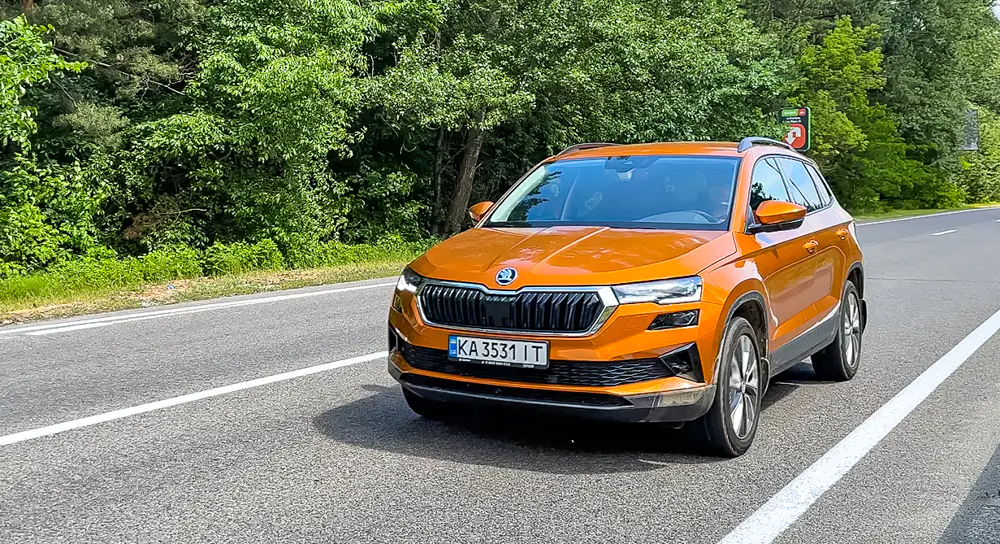
The main downside of the configuration I tested, in my opinion, is the engine not being very powerful. I feel that such a car deserves more. However, if you’re not a hardcore drag racer, the 1.4 TSI is quite sufficient for everyday use in most situations. A pleasant bonus of this choice is its fuel efficiency. Moreover, it seems that there are configurations of this car with more powerful engines available on the market.
I liked it:
- Headlights and taillights
- Keyless entry and virtual trunk button
- Front seats with electric adjustment and memory
- Instrument panel and multimedia system, wireless smartphone charging
- Intelligent adaptive cruise control
- Automation of all systems in general
- Suspension, chassis: handling and stability on the road
Cons:
- Small engine power reserve
- Weak audio system
- Insufficient illumination of the luggage compartment
In fact, we have an excellent compact urban crossover that offers all the basic functions expected in a modern car.
Read also:
- Main Differences Between LED, OLED, and QLED in TVs
- What passenger trains of the future will look like


